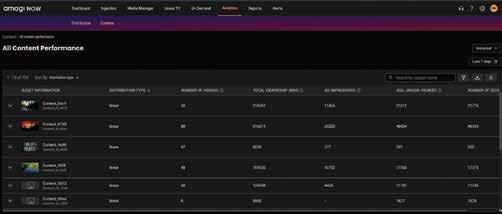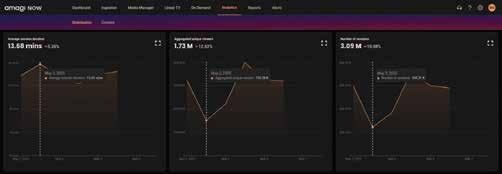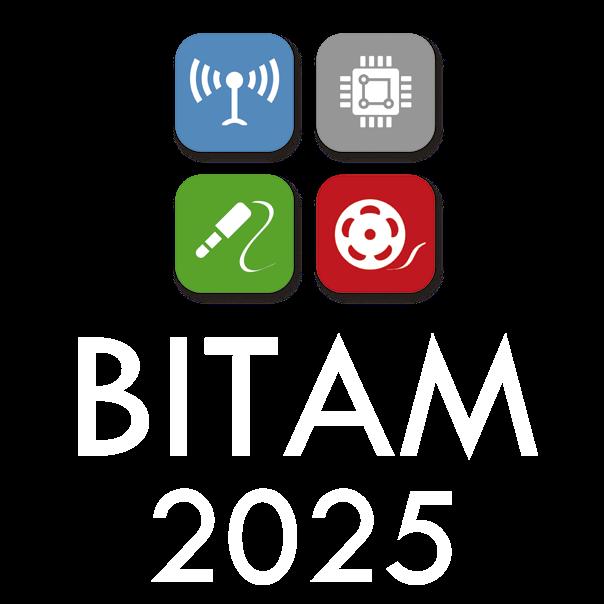




The television industry has always been, by its very nature, particularly cautious when it comes to adopting new technologies in its workflows. The need for uninterrupted broadcasting—where signal downtime is simply not an option—and the significant investment required for each technological leap are among the key reasons for this conservatism.
But this mindset is changing. The broadcast sector is now accelerating its technological pace and, in some cases—such as artificial intelligence—is even taking the lead ahead of other industries. This renewed momentum is part of a broader transformation, where the sector is shifting toward software-based systems through synergies with the IT world.
There are numerous examples of this shift, and TM BROADCAST readers will already be familiar with many of them, as we dive into a new case study every month. This time, we explore the technological transformation of Norway’s public broadcaster, NRK, which is carrying out an ambitious transition to IP-based workflows.
Editor in chief
Javier de Martín editor@tmbroadcast.com
Creative Direction
Mercedes González mercedes.gonzalez@tmbroadcast.com
Chief Editor
Daniel Esparza press@tmbroadcast.com
Editorial Staff
Bárbara Ausín
Carlos Serrano
This article is the latest installment in a special feature series on the media ecosystem in the Nordic countries, which has previously taken us to Sweden, Denmark, and Iceland. These previous reports are available in past issues of the magazine.
And what about radio in this context? While its scope for innovation is more limited and its transition to digital—particularly in terms of distribution—is far from being comparable to that of television, we are also witnessing signs of technological acceleration in this space.
That’s why we’ve taken the opportunity to offer a global snapshot of radio’s current landscape and explore the key challenges and opportunities ahead, with insights from WorldDAB—an organization promoting the adoption of digital radio based on the DAB standard, which dominates across Europe and the Asia-Pacific region.
All this and much more—only in TM BROADCAST, your trusted source for uncovering the global trends shaping the industry.
Key account manager
Patricia Pérez ppt@tmbroadcast.com
Administration
Laura de Diego administration@tmbroadcast.com
TM Broadcast International #142 June 2025
Published in Spain ISSN: 2659-5966
TM Broadcast International is a magazine published by Daró Media Group SL Centro Empresarial Tartessos Calle Pollensa 2, oficina 14 28290 Las Rozas (Madrid), Spain Phone +34 91 640 46 43
BROADCASTERS Special Nordic Reports (IV)
We speak with its CTO, Pål Nedregotten, to explore the main technical challenges of this process and to provide an overall assessment of its current technological landscape.

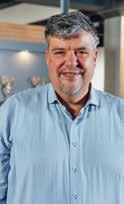
Jan Eveleens, CEO of Riedel Product Division:
“We need to be conscious of the hype cycle, and focus on what’s truly useful and affordable”
We interview Jacqueline Bierhorst, President of WorldDAB, to assess the



By Raymond Miklius, Vice President, Technology,
The FAST (Free Ad-Supported Television) market is accelerating rapidly, establishing itself as one of the main pillars of the new broadcast landscape. Within this context, the sports sector has found an exceptional ally, gaining a new platform to engage loyal fans and reach new audiences.
› FreeLiveSports.TV goes all in: from major leagues to emerging disciplines.
› Amagi: The tech backbone of Sports Studio.





Fox Corporation has announced its acquisition of Caliente TV, a sports broadcasting platform in Mexico. In addition, Carlos Martinez has been appointed to the role of Executive Vice President and Managing Director, Latin America, Fox Corporation. He will be responsible for overseeing the FOX broadcast strategy in Latin America and the transition of Caliente TV in Mexico and the channel’s launch in Central America, as the corporation has claimed in a statement.
“FOX’s investment to acquire Caliente TV reflects our commitment to building a leading sports streaming business in Mexico with massive audience reach, a robust sports rights portfolio and an impressive
roster of exclusive sports leagues and talent”, said Martinez.
With this acquisition FOX will develop a multi-platform business that will include the launch of a new Pay TV channel and an SVOD Platform that will join the existing AVOD platform Tubi. Its objective is to produce and distribute more than 3,000 hours of original Sports content.
Additionally, FOX will now hold a portfolio of broadcast rights to deploy across its owned and operated platforms including:
› Six Liga MX Men’s Clubs – including Club Leon, Club Pachuca, Club Tijuana, Club Queretaro, Club Tigres UANL and Club Juarez
› Ten Liga MX Women’s Clubs – including Club Guadalajara, Club Leon, Club Pachuca, Club Tijuana, Club Juarez, Club Queretaro, Club Atlas, Club Santos, Club Puebla and Club Mazatlán
› CONCACAF Champions Cup (Copa de Campeones de la CONCACAF) – featuring the top football clubs from North and Central America including Liga MX and MLS
› Premier League and the FA Cup – featuring England’s top football clubs
› UEFA Champions League – featuring Europe’s top football clubs
› Ligue 1 France – including this year’s UEFA Club Champion, Paris Saint-Germain
› Coppa Italia – featuring the top Men and Women’s clubs from Italian Serie A football in an annual knock-out competition
› The United Football League (UFL) – the exciting American football competition played each Spring
› Big Ten Conference – the premier college athletics conference in the U.S. featuring American football, basketball and a variety of other athletic events from top U.S. universities
› World Enduro Championship (WEC), NASCAR Mexico Series and Other Motorsports International Rights
At the SportsTech Belgium Summit hold at the Proximus Basecamp in Tubize, the Royal Belgian Football Association (RBFA) announced its selection of EVS’s Xeebra video review system to power its new centralized VAR (Video Assistant Referee) Center. The facility, located at the RBFA’s headquarters, will be equipped by Euro Media Group (EMG) ahead of the upcoming Jupiler Pro League season kicking off in July, as EVS has claimed in a statement.
The new VAR Center will feature six booths, each outfitted
with EVS’s Xeebra system—an intuitive, FIFA– and FIBA-certified multi-camera review solution. Xeebra is designed with the objective of enabling officials to review action from multiple angles in synchronization, with touchscreen controls that allow zooming and slow-motion playback.
Peter Willems, CEO of the RBFA, emphasized the strategic importance of the partnership: “This investment represents a significant leap forward in our commitment to innovation

and fairness in football. By centralizing our VAR operations with EVS’s Xeebra technology, we are equipping our referees with the most advanced tools available — ensuring more accurate decisions and reinforcing Belgian football’s position as a leader in integrity and technological excellence”.
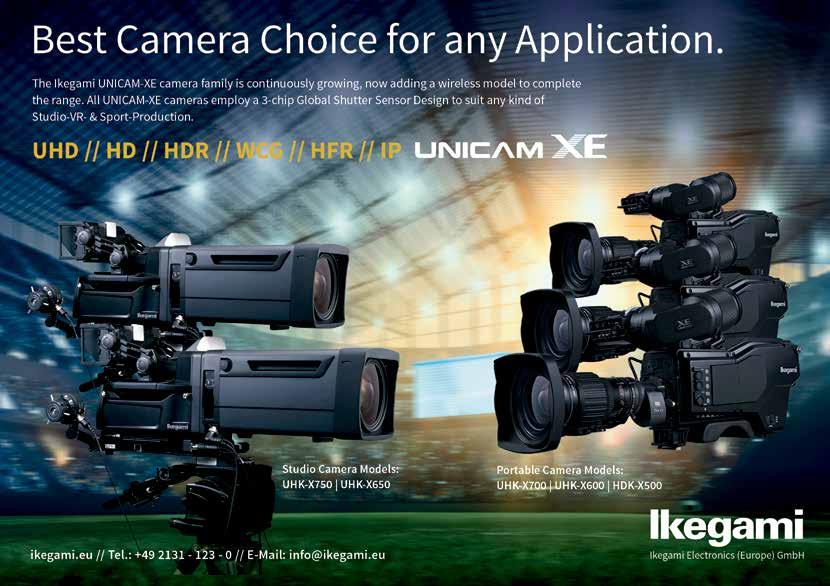
DAZN has announced a new partnership with Meta to launch an extended reality (XR) version of its app for Meta Quest devices, with the objective of delivering a fully immersive viewing experience for the FIFA Club World Cup 2025.
The DAZN: FIFA Club World Cup XR Experience app will be launched exclusively in the U.S. via the Meta Horizon Store. This was developed in collaboration with spatial computing pioneers Immersiv.io with the intention of introducing a new dimension to the platform where fans with a Meta Quest headset to immerse themselves in the FIFA Club World Cup 2025.
On top of live video streaming with multi-angle camera views and interactive XR stats panels, supporters are able to watch every match of the competition with a 3D tabletop experience
that provides a real-time virtual recreation of the pitch and players, providing unique perspectives and interactive controls. Fans are able to look down at the entire pitch and even rewind time to relive key moments in 3D, with the experience including replays of goals and highlights.
For the climactic final games of the tournament, including one of the tournament’s quarter-finals, semi-finals, and final, the experience will go even further with 180-degree live video feeds, placing fans virtually inside the stadium.
Inmersive features
› All 63 tournament games available live in an immersive experience. With multi-angle views, complemented by XR Stats Panels.
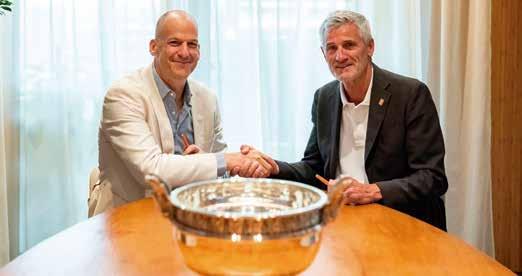
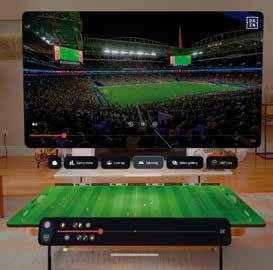
› 3D Tabletop experience allowing users to control the live game and rewind time to relive moments in 3D.
› Watch content including replays of goals and highlights anytime.
› Experience 180° live feeds and 360° content for the top games – Quarter-Final, Semi-Finals, and the Final.
Warner Bros. Discovery (WBD) has announced a new extension of its agreement with the French Tennis Federation (FFT) that stablishes that Roland-Garros will continue to be broadcast on its channels and platforms on a pan-European basis (excluding France) until at least 2030, as WBD Sports has claimed in a statement.
The new deal, which will extend WBD’s relationship with the FFT to over 40 years, was signed last Sunday, 8 June, by French Tennis Federation President, Gilles Moretton, and President & Managing Director of WBD Sports Europe, Andrew Georgiou, ahead of the afternoon’s men’s singles final at Roland-Garros.
Eurosport, which first broadcast Roland-Garros in 1989, will continue to show the tournament on its linear channels across mainland Europe with the broadcaster in the UK and Ireland, TNT Sports.
Coverage of every court will remain available to watch live on its streaming platform HBO Max from 2026.
Gilles Moretton, French Tennis Federation President, affirmed: “We are delighted to continue our long-standing partnership with Warner Bros. Discovery, whom we thank for their continued trust, demonstrated by the renewal of this agreement”.
“The excellent audience figures for Roland-Garros in Europe are a testament to the FFT’s ability to organize an increasingly appealing tournament, and the ability
of Warner Bros. Discovery to promote our tournament to our many European fans. This renewed partnership is a perfect illustration of our growing ambitions on the international stage”, cotinued.
Andrew Georgiou, President & Managing Director, WBD Sports Europe, added: “We are thrilled that we will continue to broadcast a tournament that enjoys the prestige and heritage of Roland-Garros and we are delighted that we will continue to deliver live coverage of an event that engages and resonates with millions of viewers across Europe”.
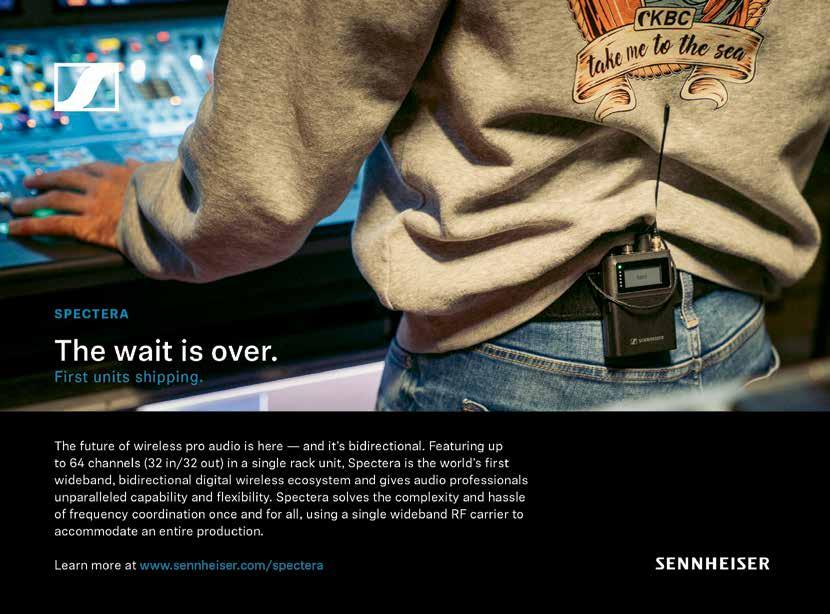
EMG / Gravity Media and ATP Media have introduced a new remote production workflow for ATP Media Studios, with the objective of enhancing its flexibility on delivering different broadcast solutions, as it has claimed in a statement.
At the heart of this transformation are two newly designed remote production pods, built to streamline operations for ATP Masters 1000 tournaments and the Nitto ATP Finals. The initiative looks forward to reducing on-site personnel while maintaining the highest broadcast quality.
The project took about a year to develop and was delivered in January, in time for the start of the ATP Tour season. The pods are compact and designed to fit within a Q6 pallet, making them transportable via air and sea freight. The Q6 pallet has a tare weight of 120 kg (265 lb) and a volume of 17.0 m³ (600 ft³) with a height of 243.8 cm (96 in). Their transportable nature has the intention of allowing seamless deployment between venues: while one pod is in use, the other is en route to the next tournament.
The system provides a plugand-play solution that integrates with ATP Media Studios’ existing
engineering infrastructure, supporting world feed contribution and court feed distribution—the backbone of ATP Media’s broadcast operations.
› Compact, mobile design: Small enough to fit into a Q6 pallet for logistics between tournament venues.
› Dual-unit system: Two pods operate in rotation—one in use at an event while the other is being transported to the next venue.
› Integrated technology: The system utilises encoding and decoding technology (H.264, H.265 HEVC, JPEG XS, NDI over RTP), with connectivity provided by Tata Communications’ fibre infrastructure.
› Scalability: The pods support up to 160 feeds per event, with 90 outgoing video and audio lines
The ATP Media Studios remote production model is integrated with WestWorks, EMG / Gravity Media’s production facility in London.
› Court A: While OB direction remains on-site, video shading, EVS, graphics (GFX), and world feed audio are handled remotely at ATP Media Studios.
› Courts B, C, and D: These courts operate with full remote production, where only cameras and audio are captured on-site while all other production elements, including graphics, replay, and commentary, are managed at ATP Media Studios
› Post-production workflows: Three Adobe Premiere craft edit suites and a Media Manager Suite oversee post-production processes.
› Behind-the-Scenes Coverage: Additional content is captured through 10 dedicated behind-the-scenes cameras across all courts.
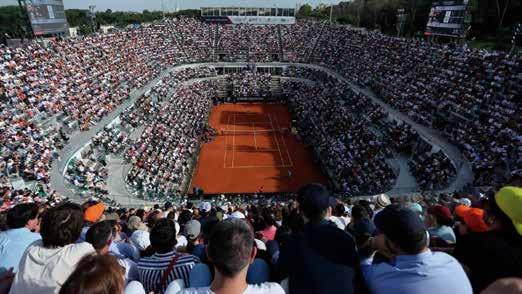
Riedel Communications has deployed its Easy5G Private 5G network and RefCam Live referee camera system during the Bundesliga showdown between FC Bayern Munich and Borussia Dortmund in April – a match known as Der Klassiker, as the company has claimed in a statement.
Initiated by the DFL (Deutsche Fußball Liga), this project represents the first-ever integration of Easy5G and RefCam in a packed stadium environment. The Easy5G network was operational in under one hour, and, operating over its infrastructure, the head-worn RefCam Live camera system delivered live 1080p50 point-of-view video from the referee’s perspective.
Mounted at eye level to Riedel’s RUN headset, the RefCam had the objective of offering a stabilized, immersive view directly from the referee’s line of sight. A Bolero S beltpack powered referee comms, while the RefCam Live beltpack streamed video to the broadcast compound – all integrated discreetly under the official’s jersey to avoid disruption.
“The DFL approached us with a clear vision to redefine live coverage with cutting-edge connectivity and immersive capture”, said Jacqueline Voss, Executive Director Strategy and Innovation of Riedel’s Managed

Technology division. “They were determined to test our solutions on the biggest stage possible, and we delivered. With just one Easy5G base station, we achieved full coverage of the pitch and tunnel –the system performed flawlessly”.
Riedel’s Managed Technology division handled the deployment, including system setup, frequency management, remote access capabilities via a 5G core management port, and professional on-site interaction with match officials. In areas outside of 5G coverage – such as the referee’s locker room – Riedel enabled Wi-Fi-based video preview, streamlining pre-match setup without disrupting match-day operations.
“DFB Schiri GmbH is always interested in making the referees’ perspective clearer
to the public in order to generate more understanding for their work”, explained Alex Feuerherdt, Head of Communications and Media Relations, DFB Schiri GmbH. “This can also be achieved through the use of the RefCam. It shows how the referee perceives the game and interacts with the players. This is very valuable for us, also for internal training purposes”.
The RefCam content was featured as part of the Bundesliga Special Show ‘Der Klassiker Unseen – Ref’s-Eye View’ and across DFL’s social media platforms. This activation was made possible under IFAB’s ongoing approval program for body-worn camera testing, with FIFA and DFL supporting technological experimentation.

Grass Valley has announced an advancement in Greek media production: the operation of the country’s first fully equipped 4K UHD Outside Broadcast (OB) truck. Owned by Live Productions and operated by View Master Events, the truck features a 12G UHD HDR signal chain centered on 12 Grass Valley LDX 98 cameras, as the company has claimed in a statement.
John Zarganis, CEO at View Master Events, explained: “We aimed to build a production platform that positions us as leaders in the Greek and broader regional markets. Grass Valley’s LDX 98 cameras provide the image quality and operational versatility required for today’s demanding live production environments. Whether covering sports, cultural events, or major
international broadcasts, these cameras deliver consistent performance across multiple formats and frame rates”.
John Protopsaltis, Technical Director at View Master Events, added: “From an engineering standpoint, integrating Grass Valley’s LDX 98 system has been transformative. The seamless 12G workflows and robust HDR capabilities give us the technical confidence to take on any project. The cameras’ adaptability simplifies setup and operation under tight production timelines, which is crucial in a live OB environment”.
The LDX 98 cameras support native 4K UHD capture with ITU-R BT.2020 standards. They are designed to operate across 1.5G, 3G, and 12G workflows, and are combined with 3X and
6X super slow-motion options and simultaneous live and speed outputs with the intention of allowing the production team to adapt quickly to varying broadcast requirements.
The system was designed and integrated by Telmaco S.A., Grass Valley’s partner in Greece for more than 25 years, who provided the full Grass Valley camera package and integration services.
Drossos Kyriazis, COO at Telmaco, concluded: “This represents the first brand-new 4K camera package deployed in Greece and is a landmark for the broadcast industry in the region. We are proud to support View Master Events and Live Productions with our combined expertise and Grass Valley’s world-class technology”.
France Télévisions has received the 2025 EBU Technology & Innovation Award in partnership with Dalet for their project, C2PA in Action: Daily Verified News. The award, presented by the European Broadcasting Union (EBU), recognizes initiatives that look forward to advancing broadcasting technology or media production processes. The project integrates the Coalition for Content Provenance and Authenticity (C2PA) standards into France Télévisions’ newsroom, tackling an industry challenge: combating misinformation and ensuring content authenticity in the age of AI-generated media and deepfakes, as Dalet has claimed in a statement.
Aiming to set a new benchmark for transparency in journalism, France Télévisions partnered with Dalet to try to create a new proof of concept (PoC) that integrates C2PA standards into newsroom workflows. Focused on their flagship Journal de 20h news program, the project equips audiences with tools to verify the integrity and origin of content.
1. Signing the content: Each piece of media was cryptographically signed using an identity certificate, confirming its origin from France Télévisions.
2. Embedding metadata: Essential editorial details,
such as journalist names and broadcast date, were included in the C2PA manifest.
3. Verification on digital platforms: A custom player developed by France Télévisions allowed audiences to access and verify C2PA metadata.
“We are honored to have received the prestigious EBU Technology and Innovation Award in recognition of the groundbreaking project we have developed to ensure our audiences receive reliable and trustworthy information”, said Romuald Rat, Director of TechLab-AI at France Télévisions. “By automating the C2PA signing process within our existing production environment, we’ve been able to enhance transparency and build confidence for our viewers.
Partnering with Dalet on this innovative project was essential, and close collaboration played a key role in its success”.
The companies highlight the integration of C2PA throughout the media supply chain. Its objettive is to try to ensure effectiveness and scalability, tackling challenges like synthetic media head-on.
Mathieu Zarouk, VP of Product Management at Dalet, added: “This award reflects our dedication to co-designing innovative solutions with our customers. C2PA is a recent, open standard with many possible paths for implementation, which is why early collaboration with an industry leader like France Télévisions was so critical. Their expertise ensured we were building in the right direction. This recognition highlights the impact of that close partnership and our shared commitment to innovation, trust, and transparency in media. Together, we’ve laid a strong foundation for a robust content authenticity ecosystem that benefits both professionals and audiences worldwide”.
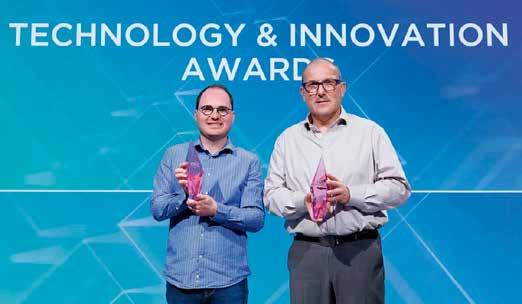
During the initiative “Waltz into Space” that took place on May 31, 2025, Johann Strauss II’s Blue Danube Waltz was not only performed at Vienna’s Museum of Applied Arts (MAK) but was also transmitted live towards Voyager 1, currently more than 24 billion kilometers (15 billion miles) from Earth. This feat had the objective to become the centerpiece of the event that celebrated both the 200th birthday of the “Waltz King” and the 50th anniversary of the European Space Agency (ESA).
To carry it out, the audio production was entrusted to Vienna-based studio tonzauber, led by Georg Burdicek, who deployed a mobile production studio centered around a Lawo mc²36 MkII audio production console.
“Our goal was to deliver audio at the highest standard – not only for the audience in the hall and global streams, but symbolically, for the universe”, explained Burdicek. “Being the first team to send music into space via a Lawo console is a special distinction for me”.
Inside the tonzauber OB truck, a Lawo mc²36 MkII with integrated A__UHD Core handled central routing and real-time mixing of all audio signals. With its 384 DSP channels at 96 kHz, support for 864 I/O paths, and native compatibility with ST2110, AES67, and RAVENNA, the desk

also included a Dolby Atmos mix, multiple broadcast feeds, and simultaneous multitrack recording.
“In terms of sonic performance, I’m very happy with Lawo”, added. “The desk has no coloration – it gives me exactly what I feed into it and responds exactly as I expect. That’s crucial when you’re not necessarily mixing for outer space, but for the inner depth of sound”.
The main technical challenge for the production was the room. “It’s not a concert hall, it’s an exhibition space with a glass ceiling and hard surfaces.
Acoustically, that’s a nightmare”, Burdicek noted. “We had to compensate with a lot of know-how and the right tools”.
The 40-piece orchestra, conducted by the Vienna Symphony’s new chief conductor Petr Popelka, was recorded using 28 Schoeps condenser microphones. To try to achieve a coherent and immersive result despite the difficult acoustic environment, the tonzauber crew relied on the Waves integration within the Lawo console: “Multiband compression, dynamic EQs – we used every tool available to shape a mix that wasn’t just audible, but emotionally resonant”.
Integrated Systems Europe (ISE) debuted the Innovation Park space at ISE 2025, a meeting point located in the heart of Congress Square, which featured 80 promotional pods aimed at showcasing startups and innovative projects, as ISE has claimed in a statement.
The participating companies were selected through a registration process, meeting a series of criteria established by the organization. In addition to the promotional pods, it included a stage for presentations (Pitching Stage), a matchmaking area, and, on its inaugural day, an Investor Forum.
“Innovation Park was created to support the emerging talent in the AV community”, commented Mike Blackman, managing director of Integrated Systems Events. “The energy in the venue and the quality of the collaborations reflected
the importance of this platform for the future of the sector. The solutions presented, from acoustic simulation and spatial audio to digital signage and intuitive UI tools, effectively addressed real problems. The market proved to be ready to welcome this new generation of AV pioneers”.
Coming from Iceland, Treble Technologies showcased its acoustic simulation and spatial audio software. “Innovation Park was a fantastic opportunity to showcase our advances in acoustic simulation”, explained Guillaume Demerliac, senior marketing specialist. “Participating on the Investor Forum panel was a key moment to share our experience in growing a startup, from the initial idea to its acquisition, highlighting the challenges and strategic decisions that have led us to success”.

For his part, Vadim Chekirka, CEO of AVGator, highlighted the role of the event as a driver of the technological future of AV: “ISE 2025 was a great opportunity to connect with visionary professionals. The strong demand for interface development tools and the growing interest of manufacturers in offering software solutions alongside their hardware opens new doors to innovation”. AVGator Inc., headquartered in the USA, offers AV integration solutions and is a certified Crestron (CSP) provider, as well as working with Extron, Biamp and Q-SYS.
Also from the USA, Digital Signal AV set its objetives: “We had two goals: to publicize our innovative products and contact potential clients and international partners. Innovation Park was an excellent avenue for a startup like ours to achieve both”, explained Daniel LeCour.
From Israel, Efrat Elitzur, director of operations at Tecom Electronics Ltd, a company focused on multimedia and AV solutions for hybrid classrooms, meeting rooms and knowledge-intensive projects, added: “ISE was the perfect setting to showcase our innovations for immersive classrooms, generating valuable conversations and great interest from consultants, distributors and industry leaders around the world”.
2025 cloncludes its edition with less exhibitors, but with an increase in attendees
InfoComm 2025 has concluded its last edition that took place in Orlando, Florida, June 7 to 13. The show welcomed 30,998 verified attendees from 97 countries and hosted 817 exhibitors showcasing pro AV products and solutions across 400,100 net square feet in the West Hall of the Orange County Convention Center, as it has claimed in a statement.
Last year, the event located at the West and Central Halls of the Las Vegas Convention Center hosted 833 exhibitors that were able to display its products across a larger space (407,000 net square feet). Although the dimensions were smaller at this edition, the event has experienced a growth of attendees: InfoComm 2024 registered 30,271 verified visitors from 125 countries.
This increase was expected from the moment the web of the event opened registrations: for 2025 total registrants reached 39,579, while on 2024 acquired 36,967.
“From the moment the doors opened, the energy at InfoComm was palpable. What was most fulfilling to see was the business being done on the show floor”, affirmed Jenn Heinold, Senior Vice President, Expositions, Americas, AVIXA, producer of InfoComm. “We were very intentional about attracting end users to the show – they are critical part of growth for the pro AV, IT, and broadcast ecosystem. They drive product enhancements from manufacturers and push for more innovative technology. Solution providers came out in full force – with product launches and interactive experiences”.
The InfoComm 2025 program featured speakers, education, networking events, and certification exams.
On Wednesday morning, Dang Ly of Universal Destinations & Experiences, Jeff Zabel of Amazon Web Services (AWS), and moderator Todd Hougland of Ripley Entertainment discussed
the rising demand for immersive, personalized experiences that blend the digital and physical worlds, like Universal’s Epic Universe. They shared the critical role that cloud infrastructure and AI-powered intelligence plays in driving these experiences.
Brad Hintze from Crestron, Eric Hutto of Diversified, Christine Schyvinck from Shure, Jason Antinori from TELUS, and David Labuskes, CEO of AVIXA, took the stage on Thursday for a discussion on the future of AV, covering topics from the workplace to collaboration, standards, and AI.
Additionally, that day the AVIXA Women’s Breakfast celebrated the accomplishments of women in pro AV. Technologist Noelle Russell, founder and chief AI officer of the AI Leadership Institute, provided the keynote “Scaling Responsible AI: From Enthusiasm to Execution”, sharing stories from her career, which includes roles with AWS and Microsoft.
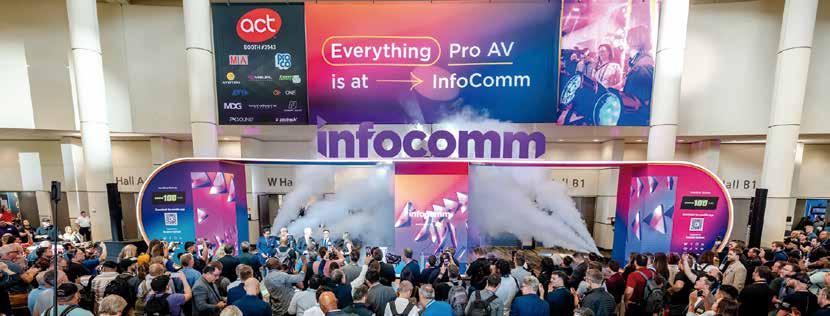
West Virginia University (WVU) had recently implemented Kiloview’s solutions to face a modern video transmission challenge in one of its sports facilities. Its objective was to prepare for the upcoming football season and growing livestreaming needs across campus decision was made while the team was preparing, as Kiloview has claimed in a statement.
The school’s production team had long relied on SDI transmission solutions for live video. However, these units failed to perform due to signal strength limitations. As a result, the team started looking for a solution while still delivering broadcastgrade video performance.
The challenge
Inside this enclosed sports venue, the existing SDI point-topoint system became unreliable, where signal strength was weak and caused unreliable video transmission. Moreover, the problem became more noticeable during events with large crowds, which added wireless interference and made stable connections harder to maintain.
In addition to this, the team needed a solution that was flexible and dependable, and could support mobile streaming—allowing them to move through stadiums, training areas, and outdoor spaces— without sacrificing video quality or reliability.

The demo
With an existing use of Kiloview products in their NDI production environment, WVU deployed the Kiloview wireless bonding encoder P3 to conduct live streaming tests at their stadium.
› A Kiloview P3 unit was connected to a Panasonic camera via SDI, streaming at 720p with a bitrate of 10 Mbps to try to balance video quality and bandwidth requirements, while also supporting resolutions up to 1080p to suit different broadcast needs.
› Leveraging dual SIM cards, the P3 utilized bonded 4G LTE connections for stable signal performance in high-traffic areas. The device also supports 5G bonding.
› The incoming video streams were managed by Kiloview’s KiloLink Server Pro, selfdeployed on Amazon AWS, which aggregated multiple mobile network. It is designed
to privately deploy without a subscription and to enable flexible streaming to various platforms or integration with Kiloview decoders for local output.
› The Kiloview P3 solution transmitted video via the SRT protocol to a Kiloview decoder D350, which decoded the incoming stream and output the video via SDI to the production truck for real-time display on the stadium’s jumbotron.
The result
The Kiloview wireless bonding encoder P3 delivered a stable, low-latency live streaming solution and its connection via 4G cellular networks enabled quick deployment without complex configuration.
Positive feedback highlighted the P3’s ease of use, excellent image quality, and reliable operation.
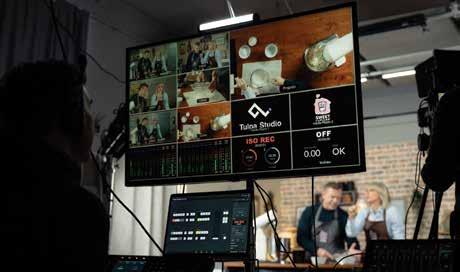
There’s a cliche endearingly employed among pro audio and AV professionals that they and their peers are all ‘failed musicians’, albeit proudly so. A badge of honour, of sorts; a shared love of creative art that has made passion projects of their audiovisual careers.
Blackmagic Design states that this sentiment may ring somewhat true for cinematographer Michelangelo Ingrosso, whose early endeavours in making his own music videos blossomed into a cinematographic passion project that would lead him to founding his own production house.
“I’ve been a musician all my life, and my initial interest in video production came from a need to promote my own music”, Ingrosso explained. “About ten years ago, I shot some music videos for my latest EP, using my self-taught knowledge of cameras and NLE software. Those early
projects caught the attention of fellow musicians, who then asked me to create videos for them”.
Learning from those first experiences, Ingrosso continued to refine his production skills while completing a communications degree, working as a freelance filmmaker, producing music videos, event coverage, and corporate content.
“I developed a deep passion for cinematography, which led me to create visually striking content for local businesses. My breakthrough came during the [Covid-19] lockdown when I began producing high-end marketing content for some of the most renowned chefs in Italy”.
That period helped establish Ingrosso’s reputation in the industry, with brands such as Philips, Costa Crociere, Ferrari Trento, Prosciutto di Parma, and Sky Sport Italy becoming part of his client roster. “My expertise
in cinematography allowed me to transition from creating social media content to high-end TV commercials and, ultimately, a fullyfledged TV show distributed by Warner Bros. on their Discovery+ and Food Network platforms”.
The show, Sweet Home, is an Italian cookery programme that brings the world of high-end pastry making to domestic kitchens. With interest and demand in his services growing, Ingrosso decided the time was right, in 2023, to found his own production house, Tulpa Studio. “My initial goal was to establish myself as a commercial cinematographer. However, I quickly realised that breaking into Italy’s high-end commercial industry – where only a few production companies dominate the market – would be extremely challenging”.
“So, I decided to take control of my own path and launch Tulpa Studio. It has since grown into a fully operational production company, headquartered in a 400-square-metre warehouse equipped with a soundstage, editing and colour grading suite, a makeup station, a lounge area, and a rental service”.
He continued: “This investment opened up numerous opportunities, allowing us to produce high-end content in-house and compete for the kind of commercial productions I had always aspired to work on”.
Aimed to produce cinematic content in-house, Ingrosso decided to run Tulpa Studio almost entirely on Blackmagic Design workflows. “Over the years, I’ve found Blackmagic products to be incredibly reliable, offering an unmatched priceperformance ratio that allows us to achieve cinematic quality without excessive costs”.
Blackmagic has been working on democratising access to broadcast technology, looking
forward to opening up the ability for independent content creators to achieve production values that were previously the preserve of established publishers.
“Whether shooting a multicamera TV production like Sweet Home or a large-scale commercial campaign, Blackmagic has been a key part of our workflow, allowing us to deliver high-calibre productions efficiently and cost-effectively”, he explained.
“One of the biggest advantages of using Blackmagic is the seamless
integration between its cameras, switchers, and DaVinci Resolve. This ecosystem approach significantly improves workflow efficiency, making it easier to manage multi-camera productions while ensuring consistency in colour and image quality. The cameras themselves stand out for their rich, cinematic colour science, which is crucial when aiming for a polished, high-end look”.
Which was exactly the aim when it came to the production of its first TV series, Sweet Home.
The International Trade Association for Broadcast and Media Technology (IABM) has announced three new appointments with the objective of focusing on engagement and community. Ana-Claire Bernardes is promoted to the newly created role of Global Head Member Engagement; Michelle Kelly joins as IABM Head of Member Engagement & Growth for North America, and Sushant Rai takes the same role for the Asia-Pacific region, as the company has informed in a statement.
“In these rapidly changing times for our industry, we need all the support, information and understanding we can get”, explained Josh Arensberg, chair of IABM board. “As an association, we are taking great steps to drive engagement, putting value creation for our members at the heart of everything we do.
Ana-Claire, Michelle and Sushant are very experienced leaders, and I am delighted they will be joining us to ensure every member – and potential member – gets the most out of our community”.
Michelle and Sushant will report to Ana-Claire Bernardes.
Ana-Claire initially joined IABM as an analyst nearly three years ago, before moving to lead IABM’s Global Engaged Partner Programme (GEP), focused on strengthening relationships, growing the global community and providing the real needs of members and the wider industry.
Michelle joins IABM after a long career at NAB as SVP of NAB Show where she was responsible for marketing and insight around events. Deeply immersed in the media industry, Michelle will try to bring a new understanding of the challenges faced today.
Sushant Rai, too, brings the experience and understanding drawn from a long career in media to this new appointment. He has worked on building teams across the region, and achieving sales success.
With the intention of raising the visibility of the association and ensuring that the voice of the membership is heard, Ana-Claire, Michelle and Sushant will also each be responsible for collaborating closely with the regional IABM Councils in their territories.
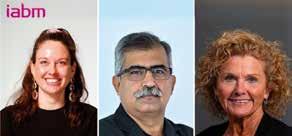
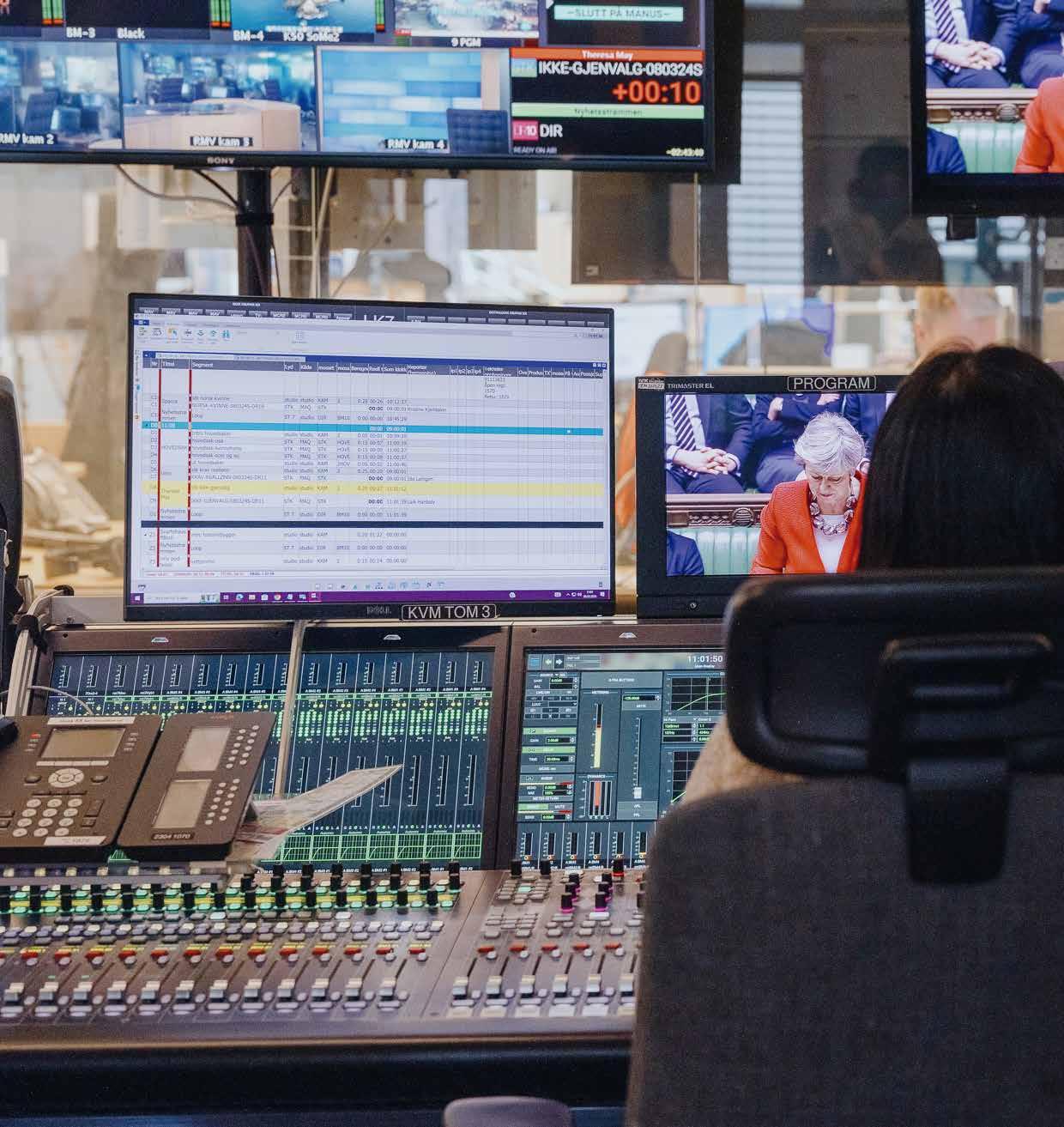

We speak with its CTO, Pål Nedregotten, to explore the main technical challenges of this process and to provide an overall assessment of its current technological landscape
By Daniel Esparza
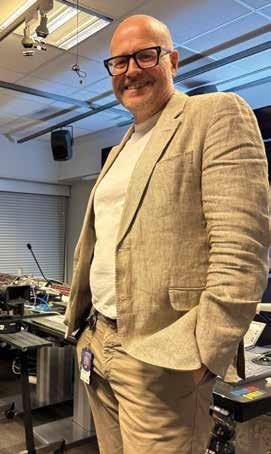
By now, no one doubts that the transition to IP is one of the major technological revolutions in the broadcast sector. But implementing it is another matter entirely, involving many factors due to the scale and complexity of such migrations. The Norwegian public broadcaster NRK is currently immersed in this process.
“We are in the process of standardizing our systems and have developed a working Minimum Viable Product (MVP) for this new IP-based infrastructure,” CTO of NRK, Pål Nedregotten, tells TM BROADCAST. “This shift also necessitates a significant upgrade in our workforce’s skillset, moving from traditional broadcast
engineering to software and IP-based integration skills.”
Pål Nedregotten shares with us the key elements of this transition and gives us a preview of what’s next: “The first major delivery will be for our new Trondheim location in 2026, which will feature the first production-ready version of our new IP-based platform.”
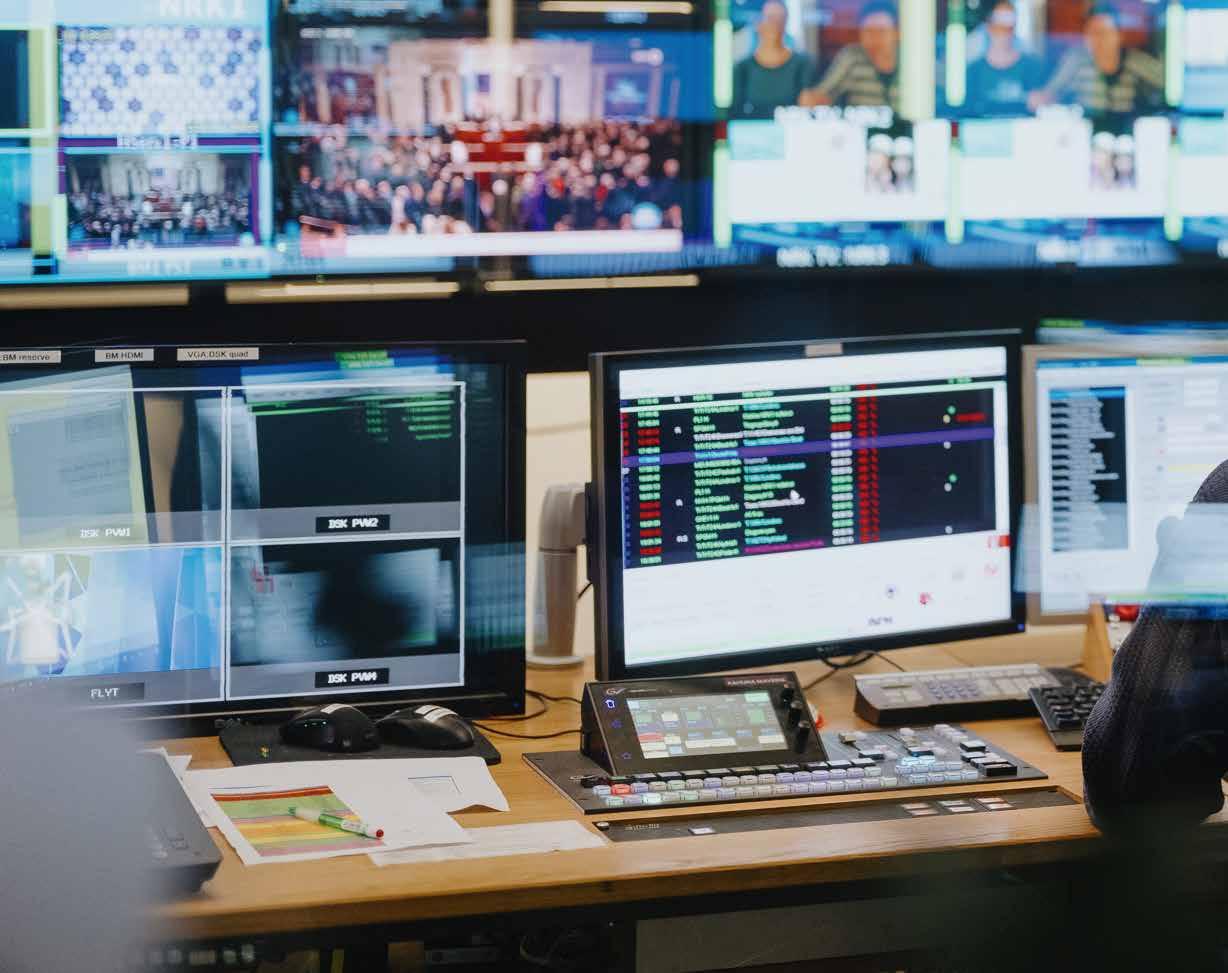
“We are moving away from legacy, building-dependent systems and replacing our entire production technology stack”
We also take the opportunity to provide a broader overview of NRK’s current technological
status. This conversation with its technical director is part of a special series of reports on the current media ecosystem in the Nordic countries. In previous editions, we spoke with executives from Sweden’s SVT, Denmark’s TV 2, and Iceland’s RÚV (you can access those articles by clicking the links).
Below, the full interview:
To begin with, I’d like to hear more about your technological transformation.
NRK is currently undergoing a complete and fundamental transformation of its technological infrastructure.

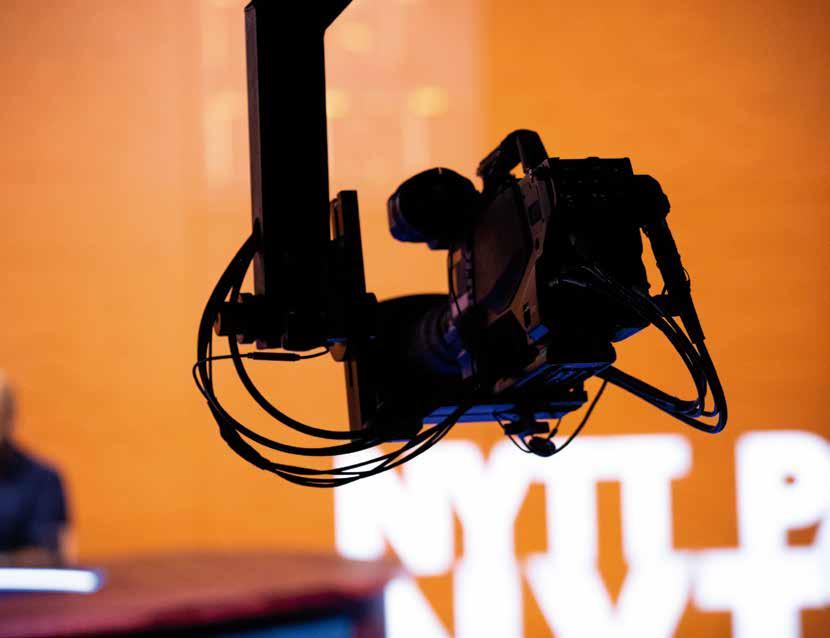
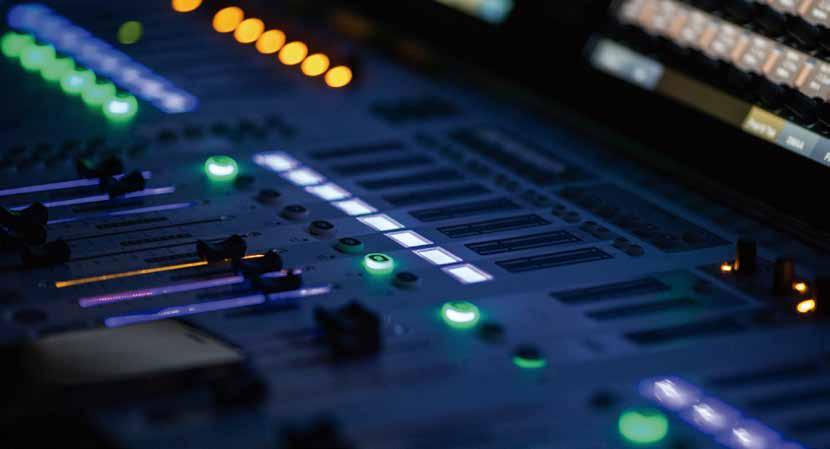
This is driven by the upcoming relocation of our main facilities in Oslo and Trondheim. We are moving away from legacy, building-dependent systems and replacing our entire production technology stack.
The most significant upgrade is the transition from traditional, battle-tested SDI to a modern, IP-based stack built on the SMPTE 2110 standard. This new architecture is designed around highly resilient, shared data resources that are engineered to be accessed remotely.
We are in the process of standardizing our systems and have developed a working Minimum Viable Product (MVP) for this new IP-based infrastructure. This shift also necessitates a significant upgrade in our workforce’s skillset, moving from traditional broadcast engineering to software and IP-based integration skills.
So, what are your next steps moving forward?
Our primary focus for the near future is the complete
technological outfitting of our new, custom-built facilities. This is a massive undertaking with hard deadlines. The first major delivery will be for our new Trondheim location in 2026, which will feature the first production-ready version of our new IP-based platform.
The larger and more complex project is the relocation of our Oslo operations, scheduled for 2029. This involves moving 2,400 people and replacing the entire technological core for our numerous radio and TV studios and editing suites.
Resolution: “We consider HDR more valuable to the viewer than UHD, which also makes sense from a cost perspective”
5G: “We learned that it has a lot of potential, but we are dependent on private networks. We also learned that latency quickly becomes an issue”
AI: “I think that the real gamechangers are ahead of us – where we see entirely new opportunities not tied to our current thinking”
Cloud: “Cloud services are a crucial part of our technological setup, although we’ve experienced that the cost benefits aren’t always there, and that sometimes it makes sense to retain a service on-prem”
OTT: “Linear holds steady compared to last year, while streaming is growing. So our total reach is actually increasing - but it’s very much streaming that is the growth factor”
While the foundational IP architecture is set, we are still analysing future production needs to determine the final scale of studios, control rooms, and editing suites required in the next decade.
The entire project is a delicate balancing act of building the future while maintaining current broadcast operations.
“NRK has an in house developed HTML graphics solution called NORA that basically handles our main graphics demands”
In which resolution are you currently broadcasting?
We are producing in 1080i25 at the moment, but are considering 1080p50 for selected productions. Our distribution chain is prepared for going 1080p50. We also consider HDR more valuable to the viewer than UHD, which also makes sense from a cost perspective.
How do you approach graphics, and to what extent have you tested immersive technologies or augmented reality?
NRK has an in house developed HTML graphics solution called NORA that basically handles our main graphics demands. For specific immersive technologies we have used Unreal and VizRT. We are in a process of phasing out VizRT.
Considering you’re in the middle of a transformation process, have you acquired any significant equipment recently? Which manufacturers do you usually rely on?
As we are in a transition to IP workflows we have chosen DHD DX2 series audio mixers for our Radio studios and production rooms such as editing suites and pre-production radio. In the Video galleries we have chosen Panasonic Kairos. As we are aiming for a true SMPTE 2110 workflow, it showed to be a good fit for our goals.
What would you say is the current state of 5G adoption in your workflows?
We have an interest in 5G as technology, but we have been slow at adopting it.

“The larger and more complex project is the relocation of our Oslo operations, scheduled for 2029. This involves moving 2,400 people and replacing the entire technological core for our numerous radio and TV studios and editing suites”
We made some interesting trials during the Nordic Skiing championships in Trondheim, where we collaborated with Telia to produce roaming camera production using

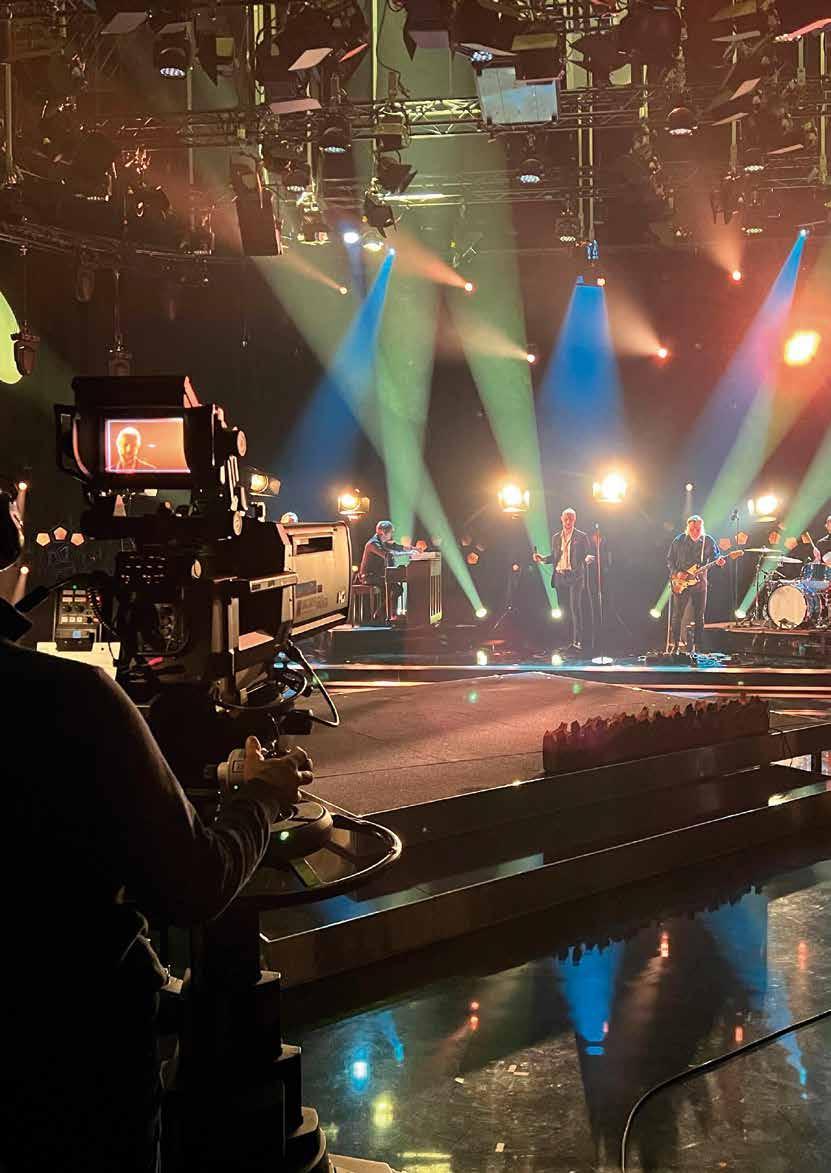

private 5G networks, while trying to use public network during medal plaza production in the evening. We learned that it has a lot of potential, but we are dependent on private networks. We also learned that latency quickly becomes an issue.
To what extent are you adopting artificial intelligence and process automation in your workflows? How do you see their influence in the near future?
AI has the capacity to both strengthen, facilitate and upend a lot of our current and future processes, and AI tools are increasingly present in all the software we licence. Some of the opportunities we see are tremendous, some are frankly more hype (and cost!) than real value.
Automation in text to speech in our user-facing products, automatic generation of metadata, and speech to text in production processes show a lot of promise – but currently the entire business is applying AI to known problems,
sometimes with tangible benefits. I think, however, that the real gamechangers are ahead of us – where we see entirely new opportunities not tied to our current thinking.
What is your level of confidence in and adoption of cloud technologies compared to on-premise systems?
We have a significant amount of containerised code in the cloud, spread across two of the largest hyperscalers. Cloud services are a crucial part of our technological setup, although we’ve experienced that the cost benefits aren’t always there, and that sometimes it makes sense to retain a service on-prem. It’s very much a question of utilising cloud offerings in the right way, for the right kinds of services. We’re still planning to retain a significant presence in hosted data centres for our core production processes. The key issue is finding the right balance and flexibility - and making informed choices as the technology develops and opportunities arise.
Finally, what is your position regarding OTT services?
In terms of OTT, I think it’s fair to say that the tipping point from linear to streaming is very close. In many user groups, it’s clearly already happened. Currently, roughly one third of our viewers choose streaming when accessing our content. Linear holds steady compared to last year, while streaming is growing. So our total reach is actually increasing - but it’s very much streaming that is the growth factor.
This is a trend that potentially has a profound impact on the way we approach our programming.
But it’s also a shift that in time has the potential to impact the entire technological value chain, from the choices we make in distribution, to internal discussions on the right technological quality. And of course it impacts the way we approach the player end. The user-facing view and navigation of our
player is crucial to get right, and to continue to develop with a clear eye on shifting user habits. While we could never compete with the budgets of the worldwide streaming platforms, we’re nonetheless judged by our users using the same yardstick.
¡’Also, compatibility on older smart TV sets has been and continues to be an issue, while new entrants into the TV field opens up discussions about player support. Maintaining and developing across a whole range of different
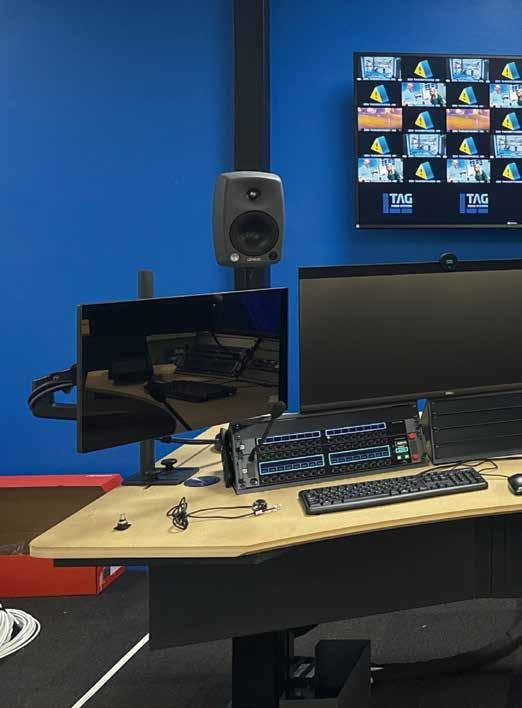
operating systems with varying degree of technological support is, quite frankly, expensive. Just last year we had to cut off access to older Samsung smart TV sets - because it was simply impossible to support them
functionality-wise, and cost-wise. That’s a difficult decision to make - I fully understand viewers who are disappointed that we will no longer support their TV setsbut unfortunately these dependencies are out of our control.
“As we are in a transition to IP workflows we have chosen DHD DX2 series audio mixers for our Radio studios and production rooms such as editing suites and pre-production radio”

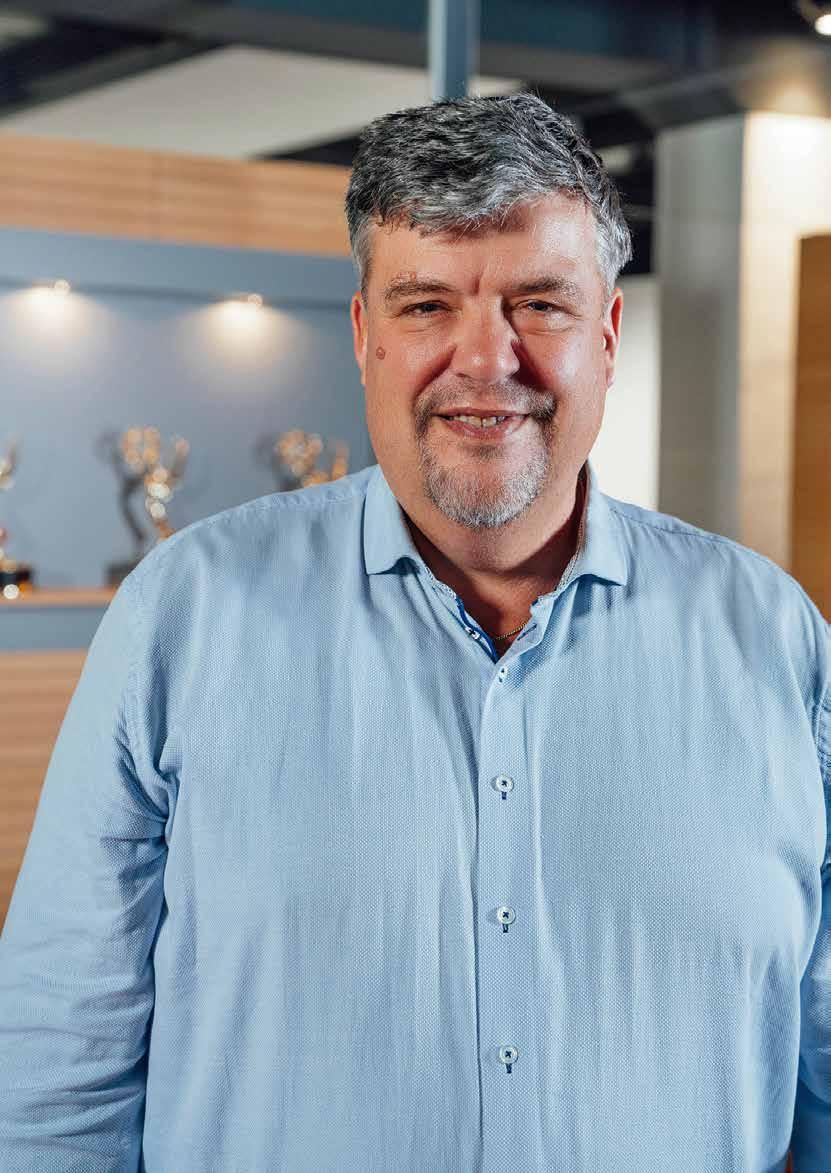
“We need to be conscious of the hype cycle, and focus on what’s truly useful and affordable”
We interview the company’s executive to explore the main challenges of his position and understand his views on the evolution of the industry: the convergence with the IT world, the push for 5G, and his strategy regarding AI are among the key topics
By Daniel Esparza
One of the key trends in today’s industry landscape is the convergence between the broadcast and IT worlds. The new CEO of Riedel’s Product Division, Jan Eveleens, illustrates this shift as follows: “In the past, we mainly spoke to broadcast engineers — people more like us in background. But now, we’re engaging with general IT professionals. That’s a significant shift, and we’re preparing the company for it. We won’t become an IT company, but we do see our product base becoming increasingly IT-centric.”
After more than six years as director of business development at Riedel, Jan Eveleens took on his new role on January 1st. “I had to learn a number of things I previously only saw from the sidelines. It wasn’t stressful, but definitely a busy period,” he reflects for TM BROADCAST.
Now that he has passed the 100-day mark, we take the opportunity to ask him about the main challenges he faces in his role. The difficulties in attracting certain types
of talent, the U.S. tariff policy, and his strategy for artificial intelligence are among the key topics of the conversation. We also asked him about the new demands from clients: “They’re looking for systems that are more efficient and easier to operate — especially as they too are struggling to find and retain skilled personnel.”
Below, the full interview:
You were recently appointed CEO of the Product Division at Riedel. What are your first impressions in the new role?
Well, I’m not new to the company — I’ve been with Riedel for more than six years — so from that perspective, the transition wasn’t a major shock.
I already knew the people, the products, and how things worked. But of course, stepping into a leadership position did require an adjustment.
I had to learn a number of things I previously only saw from the sidelines. It wasn’t stressful, but definitely a
busy period. Thankfully, the Riedel team has been very supportive, and it’s been a pleasure going through these first months. I’ve now been in the role for over 100 days, and I feel increasingly settled. In the beginning, many things were new to me and required deeper analysis — that still happens, but far less frequently now.
“My key focus now is on stabilizing the growth we’ve seen in recent years. We’ve been expanding rapidly, and that kind of growth comes with its own set of challenges”
Of course, I’ve also been working closely with the leadership team — those responsible for sales, marketing, product development, and more. The internal reshuffling has been well received, and I think it’s working very well. After four months and following our recent NAB, I feel I’ve really arrived in the role.
Naturally, we face new challenges every day — not just internally, but from the broader market: things like trade tariffs that hit unexpectedly. But that’s part of the job — that’s what I’m here for.
What strategic goals have you set for the year ahead?
The budget for the year was already finalized before I officially stepped in, although I was involved in the process. My key focus now is on stabilizing the growth we’ve seen in recent years. We’ve been expanding rapidly, and that kind of growth comes with its own set of challenges. I want to ensure we have a solid foundation to support continued expansion — that means having the right people in the right positions. There are still a few areas where we’ve had open positions or delayed initiatives that I’m now prioritizing.
“It’s harder than ever to find the right people, especially for R&D and specialized roles”
Another major focus is product innovation. We’ve launched several new solutions recently — the StageLink family, the Virtual SmartPanel (VSP), and a new audio processing platform. Stimulating further growth through these products is critical. But some of these new solutions also require new mindsets and skill sets.
Take the VSP, for instance. It’s a completely different product from our traditional offerings.
It’s a fully virtualized IP system that integrates with our customers’ core IT infrastructure. That means we need people who can speak the language of IT professionals — individuals who understand security, firewalls, virtual machines, etc. In the past, we mainly spoke to broadcast engineers — people more like us in background. But now, we’re engaging with general IT professionals. That’s a significant shift, and we’re preparing the company for it.
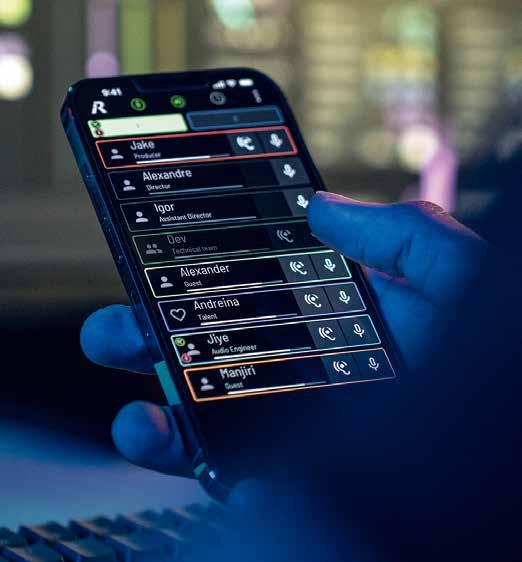
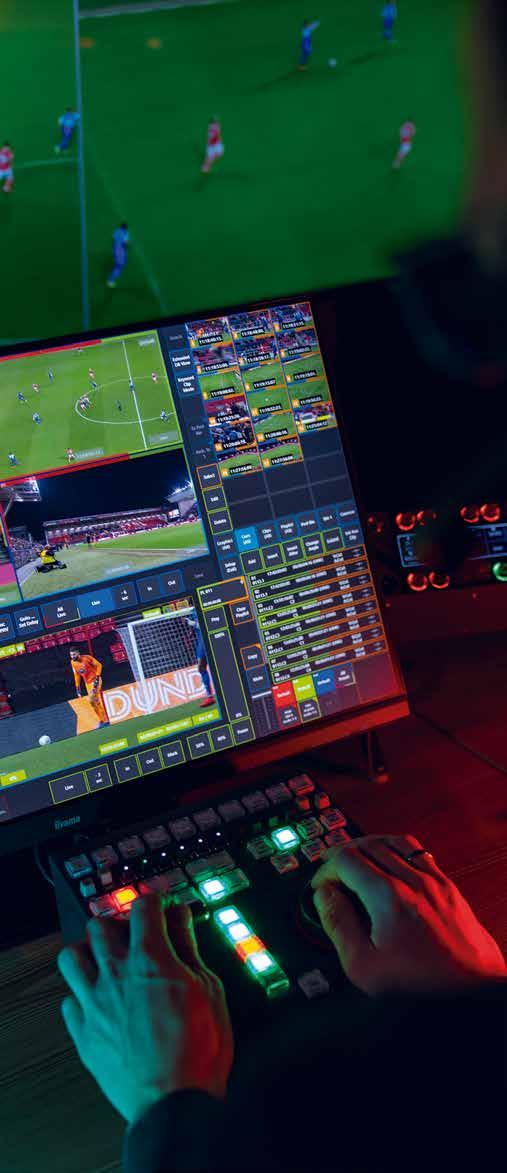
We won’t become an IT company, but we do see our product base becoming increasingly IT-centric. As more of our core systems move to software and cloud platforms, we need to adapt — not just technically, but in how we engage with our customers. We must speak their language and understand their needs.
That’s a clear shift. What would you say are the main challenges you’re facing as a company right now?
One that comes to mind is the global uncertainty following recent U.S. trade decisions…
First and foremost, the global trade situation — especially the unpredictability of U.S. tariffs — has created a lot of uncertainty. Exporting to the U.S. could become significantly more expensive, and while we’re trying to minimize the impact, we’ll inevitably have to adjust some pricing. The biggest issue is not knowing how tariffs will evolve — whether they’ll increase, decrease, or change overnight. That uncertainty makes planning difficult.
“With AI, we’ll introduce solutions gradually, based on real use cases and customer needs. Not everything needs to be disruptive; it just needs to be useful, efficient, and sustainable”
Secondly, currency fluctuations — especially during periods of economic instability — are another major concern. We do a lot of business in the U.S., and we also source a lot in U.S. dollars, so it’s somewhat balanced, but there are still risks. We’re keeping a close eye on how this affects our global operations.
The third ongoing challenge is talent acquisition. It’s harder than ever to find the right people, especially for R&D and specialized roles. In the past, you’d post a job and receive 30 or 40 applications. Today, you might get none. We’re increasingly relying on headhunting. And as we move closer to the IT space, we’re also competing for talent with major players like Google and Amazon — companies that can offer much higher salaries. So the competition is real.
Let’s talk about your customers. Since your focus is broad, how do you address the needs of such a diverse customer base?
Another important challenge is certainly the fact that our customer base is incredibly diverse. On one end, we’re working with the latest developments in cloud and AI. But at the same time, we can’t forget that many of our customers are still operating with modest setups.
Some are still using SDI; in certain cases, even analog audio is still part of their workflows. And we need to support them too—that’s something I mentioned earlier. We can’t just ignore these users. This broad spectrum means we’re stretched quite wide.
From an R&D perspective, this creates a real challenge: we can’t allocate
all our resources to new technologies, because a significant portion of our customers still rely on more traditional implementations. And that’s perfectly fine. We don’t see them as second-class users. These are simply clients with different needs and dynamics—and we need to accept and respect that.
Following on from that, what are the main demands or areas for improvement you’re hearing from your customers?
Many of our clients are under pressure themselves. The media and entertainment landscape is evolving rapidly, and our customers are having to do more with less. They’re looking for systems that are more efficient and easier to operate — especially as they too are struggling to find and retain skilled personnel.
System simplicity is critical. One client once told me they abandoned IP-based production in OB trucks because they didn’t have enough “rocket engineers” to run them. That phrase
stuck with me. If a system is too complex to operate reliably, it’s not helping the customer.
Flexibility is another key requirement. Long-term investments are riskier today. Clients don’t want to be locked into a system for ten years if they’re unsure about future developments. That’s driving interest in software-based and subscription models, where they can scale or switch as needed.
And yes — of course — there’s AI. Customers are increasingly asking how AI can help them do more with fewer people and simpler workflows. We’re exploring this with a small team of AI experts. Think voice recognition in intercoms, personalized settings, intelligent routing — features that can truly enhance usability. We’re not aiming for hype-driven innovation, but practical tools that improve user experience.
What’s your general philosophy around introducing AI and new technologies?
At Riedel, we’ve always been early adopters — for example, we were among the first with IP-based intercom — but we’ve never forced innovation on customers. We believe in strong, long-term relationships. Our owner, Thomas, is in it for the long haul, and that mindset shapes our approach.
“We
can’t allocate all our resources to new technologies, because a significant portion of our customers still rely on more traditional implementations”
So, with AI, we’ll introduce solutions gradually, based on real use cases and customer needs. Not everything needs to be disruptive; it just needs to be useful, efficient, and sustainable.
Don’t expect earthshattering things that may look cool but won’t actually be used in daily operations. I’m an old guy and I’ve been in this industry for 40 years. What I’ve seen, time and again,
is the classic hype curve. When we transitioned from analog to digital, everyone said everything would be digital right away. And sure, it happened — but it took a long time, and came with more pain than people expected.
We’ve seen the same with cloud and now with AI. Everyone claimed everything would move to the cloud — and then people realized it’s not that easy. It’s often more expensive than running things on-prem. Sometimes the cloud isn’t even available when you need it. One of our customers tried to launch an intensive process in the cloud, only to find that Amazon had no available GPU servers because all the AI workloads were already using them. They couldn’t spin up their live production.
These are the kinds of practical challenges we all need to learn from and work through. That’s why we’re approaching AI with care. I truly believe in the power of artificial intelligence — not just for
our industry, but in our everyday lives. It will change how we live. But we need to be conscious of the hype cycle, and focus on what’s truly useful, what’s affordable, and what makes commercial sense. That’s not always where the hype is pointing.
And what about 5G? What’s your approach to 5G networks?
We acquired in late 2024 a small company in Germany called MECSware, which is now part of Riedel.
We launched that product as Easy5G. So basically, we believe very much in 5G technology going forward for many applications. We sometimes describe it as “Wi-Fi on steroids.” Wi-Fi networks have offered a lot of functionality and still do in many applications — including our business — but they also have shortcomings. You’re in the free band, and there are limitations in the system design because it was never intended for certain things.
“Clients don’t want to be locked into a system for ten years if they’re unsure about future developments. That’s driving interest in software-based and subscription models”
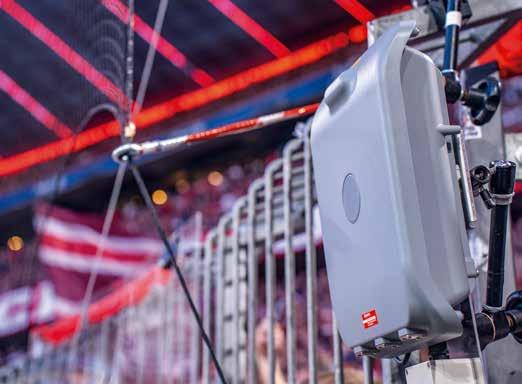
With 5G — and specifically private 5G, which we can now offer — we can add extra functionality on the IP layer that Wi-Fi can’t deliver: better range, support for more simultaneous users, and protection from interference. Easy5G is a really important element in our strategy going forward.
One or two things that we already do: we have, for example, the RefCam — a small camera mounted on the earpiece of referees, though it can be used for many other applications as well. That’s now also running on 5G. It could run on a public 5G network, but in a stadium full of spectators, the public 5G can become congested. With Easy5G, our customers can deploy their own private 5G network. That means those services are protected from public 5G traffic.
Another example is the Virtual SmartPanel I mentioned earlier. It’s also available as an app for iPhone or Android. It can run over public 5G, but if available, we can also deploy it on a private
“Wireless is an important strategy for Riedel. We will certainly continue building new applications on top of it and act as a provider of private 5G networks”
Any IP application can be run — it just needs to be protected and authenticated, typically with a SIM card. That’s another benefit: it’s a very pure, managed system, but open to a wide range of use cases. There’s a lot of interest.
act as a provider of private 5G networks. Until now, setting up such networks was very complex — you needed rocket engineers, again. With Easy5G, we’re changing that.
To wrap up, are there any other innovations or future developments you’d like to share?
We’ve covered most of it, but to summarize, we’re focusing on three core innovation areas: wireless (with Bolero and beyond), virtualized and softwaredriven products (like VSP), and practical applications of AI. Our StageLink boxes are also a good example — traditional in form, but highly innovative in design and usability.
5G network. So we have our own applications running on Easy5G, but our customers will bring many others. After all, Easy5G is just an IP-based wireless network, managed as a private system. SIMPLYLIVE
Wireless is an important strategy for Riedel. As you know, we’re already strong in that space with Bolero, and we see 5G as a natural extension. We will certainly continue building new applications on top of it and
And of course, SimplyLive is a strategic part of our video portfolio. Since acquiring them, we’ve integrated their live production and replay capabilities into our vision. It’s software-first and aligns perfectly with where the market is going — and yes, cloud migration is part of the roadmap. But as always, we’ll offer customers the choice: on-prem or cloud.


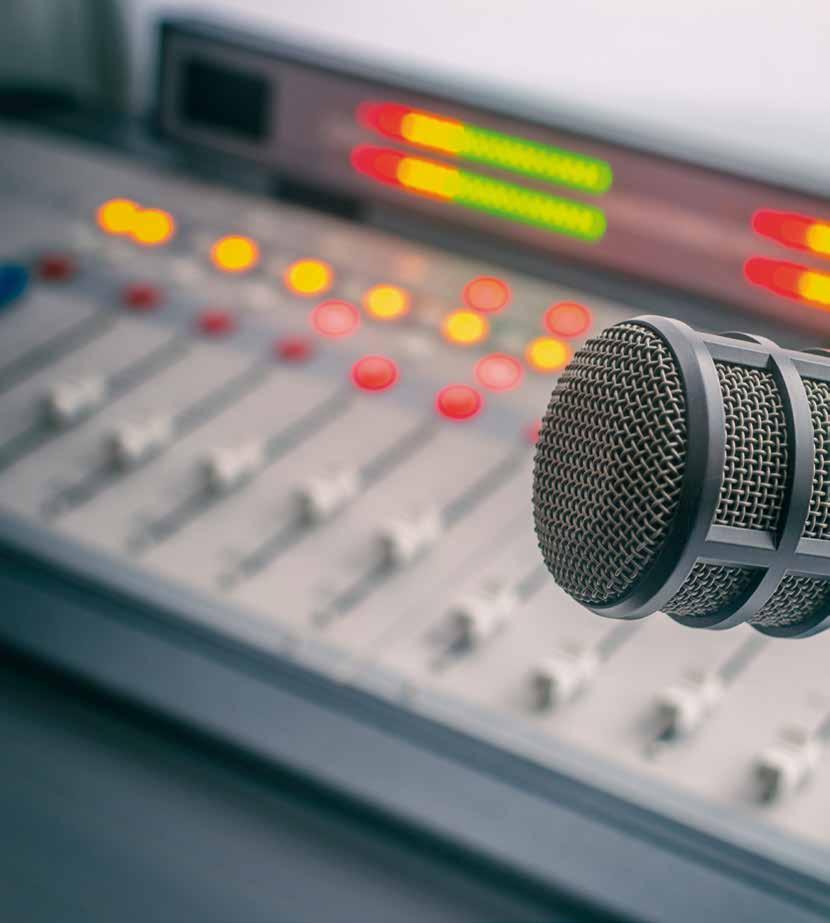

We interview Jacqueline Bierhorst, President of WorldDAB, to assess the current situation and explore the main challenges of this transition
By Daniel Esparza
The pace of digital adoption in radio and television is, without a doubt, vastly different. While DTT (Digital Terrestrial Television) has completely replaced analogue television in a large number of countries and its reach is practically global, the scenario for radio is quite different. Differences in institutional support, household penetration, and direct competition with streaming services are some of the factors that help explain this gap.
But this situation appears to be changing, and digital radio is gaining ground in a growing number of countries. “Just in the last six months, we’ve seen the launch of DAB+ in Turkey and the announcement of a nationwide rollout in Greece, as well as new trials in countries as diverse as Ireland, Bosnia & Herzegovina, and Thailand. This comes alongside sustained growth in established markets,” explains to TM BROADCAST Jacqueline Bierhorst, President of WorldDAB and Project Director of Digital Radio NL.
The most prominent case is Norway, which became the first country to completely switch off analogue radio in 2017. But other countries are also taking steps in this direction. “We’ve also seen FM switch-off from Switzerland’s public broadcaster SRG SSR, and the start of a phased switch-off in the German state of Schleswig-Holstein – some stations have started, and on 30 June, Deutschlandfunk and Deutschlandfunk Kultur will switch completely from FM to DAB+ at twelve locations and for a total of 16 transmitters,” states Jacqueline Bierhorst.
She also notes that “there’s significant interest in Africa, the Middle East and the Asia Pacific region, with well-established services in Australia, Saudi Arabia launching in 2023, and trials in progress in many countries such as Ghana, Uganda and Indonesia.”
WorldDAB promotes the adoption and implementation of digital broadcast radio based on DAB, the standard used by broadcasters in
Europe, Asia-Pacific and beyond. “We deliver tailored solutions and advice on all aspects of implementation to digital broadcast and/or the switch from analogue to digital radio including regulation, licensing, technical trials, network build out, marketing and production of new digital radio content,” explains Bierhorst.
“DAB+ is efficient, capable of broadcasting many stations on one multiplex, and therefore offering economic and environmental benefits”
Among the strategic objectives of this association is “to support the rollout of DAB+ to new territories for both public and private broadcasters through the entire chain, alongside working to continue the growth of DAB+ in the markets where it is already well-established”, as well as “work with the automotive
sector to ensure that digital broadcast/terrestrial radio remains at the heart of the dashboard in the connected car. And we’ll continue to roll out our innovative and potentially life-saving Automatic Safety Alerts (ASA).”
car, a key
This association hosted this year in Madrid (Spain), on June 19, the WorldDAB Automotive event, focused on the adoption of the DAB+ standard in vehicles. It is one of two global forums —along with the November Summit— that the organisation holds every year.
The car is one of radio’s key listening heartlands, so it’s critical that digital broadcast radio remains at the heart of the dashboard, explains Jacqueline Bierhorst. “We’ve done two significant pieces of automotive research: our Car Buyers Survey found that 90% of car buyers say that broadcast radio should be standard in every vehicle; while
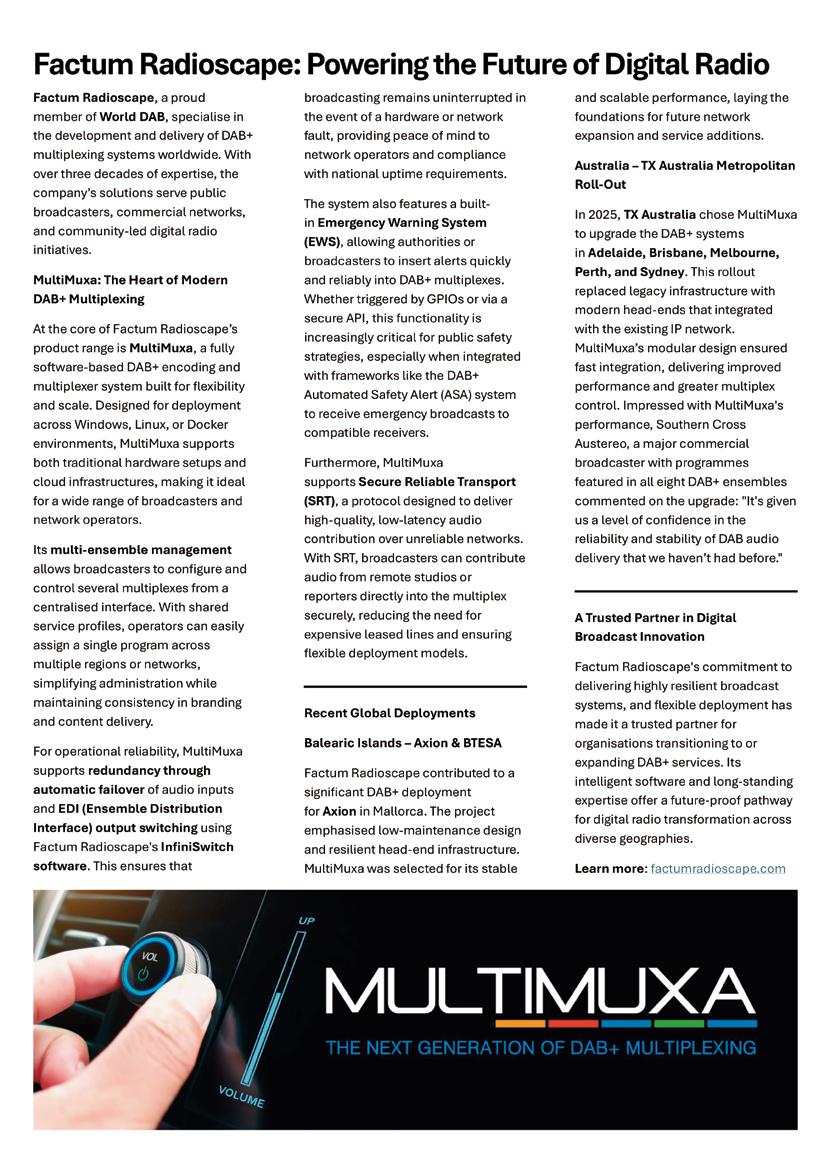
our ‘Dashboard Dialogue’ work confirmed that radio remains an essential part of the in-car experience and is the most listened-to audio platform in the car. That’s one of the key messages to the automotive industry at our event in Madrid.”
And why host the WorldDAB Automotive Summit in Madrid?
“I was in Madrid for the launch of RTVE’s DAB+ broadcasts just over a year ago,” explains Bierhorst.
“They’ve done an amazing job rolling out DAB+ to 15 cities now. Coupled with Spain being one of the largest car manufacturers in Europe, it was the perfect choice for us, and the right time to bring the Automotive conference here as DAB+ grows across the country.”
On World Radio Day 2025, Radio Nacional, Radio Clásica, Radio 3, and Radio 5 began broadcasting their programming on DAB+
“DAB+ offers the opportunity to ‘grow the cake’ for radio, through offering innovative new services, brand extensions and ‘pop-up’ stations, increasing revenues in a way that simply isn’t possible when the FM band is full in many cities”
in Guadalajara (Spain), meaning that RNE’s digital radio broadcasts are now available in 15 Spanish cities. “We’re very supportive of RTVE’s calls for a unified approach for all legal Spanish radio stations to work together to develop a technical plan and roadmap to move to DAB+ and secure radio’s digital future in Spain,” notes the President of WorldDAB.
We now ask Jacqueline Bierhorst, President of WorldDAB, about some of the current trends and challenges in digital radio:

What advantages do you see in DAB+ compared to other standards?
DAB is the most widespread terrestrial broadcast digital radio standard, and an established part of the radio landscape across much of Europe, Australia and elsewhere. It’s here, right now, with around 150 million receivers in the market around the world, and almost all new cars in Europe coming with DAB+ as standard. It’s also efficient, capable of broadcasting many stations on one multiplex, and therefore offering economic and environmental benefits, through reduced energy consumption that it makes it the most efficient choice for most counties that are at digitizing.
Our new ASA alerts offer unique features such as location targeting - only people in affected areas are notified, signaling between ensembles, and wake up functionality where receivers can be woken up by DAB+, which is especially important for alarm clock radios without an internet connection.
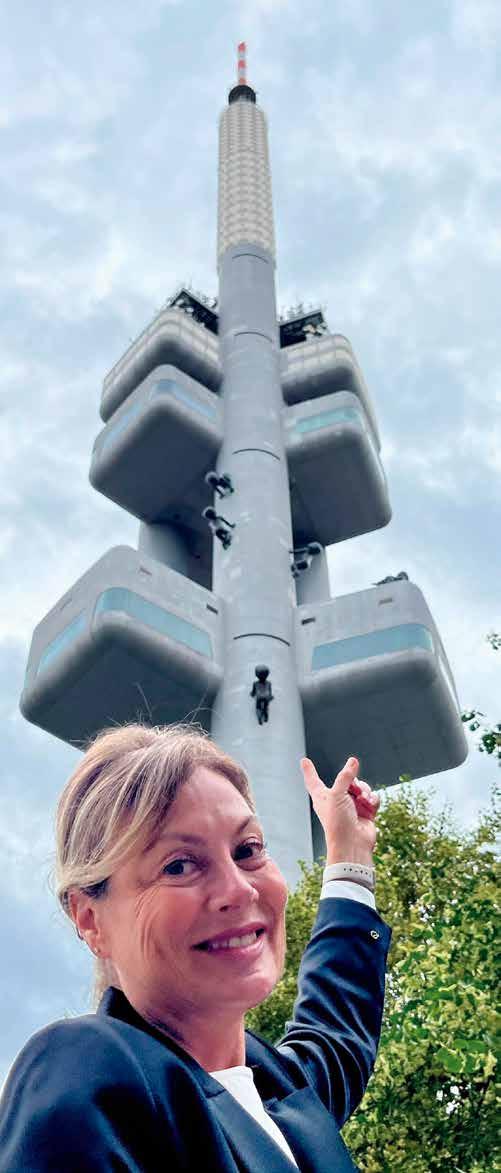
And DAB+ offers significant broadening of choice for listeners with over 60 national stations now on DAB in the United Kingdom, against seven on analogue; and growth also in Belgium, Czechia and Italy where listeners can now enjoy over 50 national DAB+ stations.
“We see proof from healthy radio markets where digitization helped re-energize and grow the cake, both in money and in growing the audience”
What new opportunities do you think digital radio offers broadcasters?
For broadcasters, DAB+ provides the digital future needed for broadcast radio — one that allows radio to keep control as broadcasters over our own distribution, leveling the playing field with the digital tech giants that want a piece of our “share of ear”. And it offers the opportunity to ‘grow the cake’ for radio, through offering innovative new services, brand extensions and ‘pop-up’ stations, increasing
revenues in a way that simply isn’t possible when the FM band is full in many cities. We can demonstrate that stations around the world that have either made the switch to DAB+ or are pure DAB+ only stations are seeing the benefits and have thriving markets.
What are the main challenges broadcasters face when migrating to digital radio?
It all starts with clear regulation that does justice to the radio market.
The radio industry needs to work together, ensuring good coverage, and that the consumer receivers are available with DAB+ in cars too, alongside great content, more than on FM. During every step, communication is key. Marketing campaigns are essential, explaining to people what is in for them to start listening via DAB+. The costs mostly go before the ROI. That may make it challenging at the beginning. But we see proof from healthy radio markets
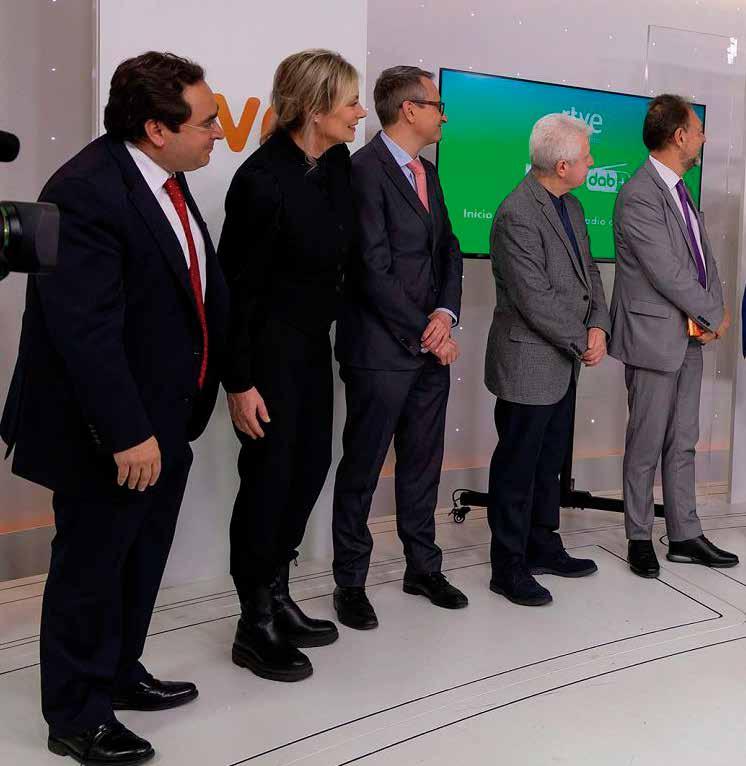
where digitization helped re-energize and grow the cake, both in money and in growing the audience.
What role does regulation play in this transition to digital radio?
The European Electronic Communications Code (EECC) means that since December 2020, across Europe, all radios in new cars must be capable of receiving and reproducing digital terrestrial radio has been very significant in
supporting digital broadcast radio’s place at the heart of the dashboard. So proportionate regulation has a role to play when developed in collaboration with stakeholders. Some territories prefer to take a more market-led approach, and this has also been successful.
How do you think analog and digital radio should coexist? What strategies are broadcasters following during this transition?
JACQUELINE BIERHORST RTVE LAUNCH

This varies widely from market to market. Norway was a trailblazer in 2017, switching off national FM services, and we are now seeing Switzerland and parts of Germany following. In many markets, we know AM and FM transmission equipment is reaching the end of its life and either needs significant investment in upgrading or taking the opportunity to adopt more efficient and cost-effective DAB+ broadcasts.
I firmly believe that broadcast radio and DAB+ will remain at the heart of audio consumption. We know that digital terrestrial broadcast radio within the overall digital strategy makes sure radio grows.
WorldDAB — the global industry forum of which I am very proud to be President — continues to be ready to support the increasing number of markets around the world seeking to implement DAB+ to provide robust and future-facing broadcast radio.

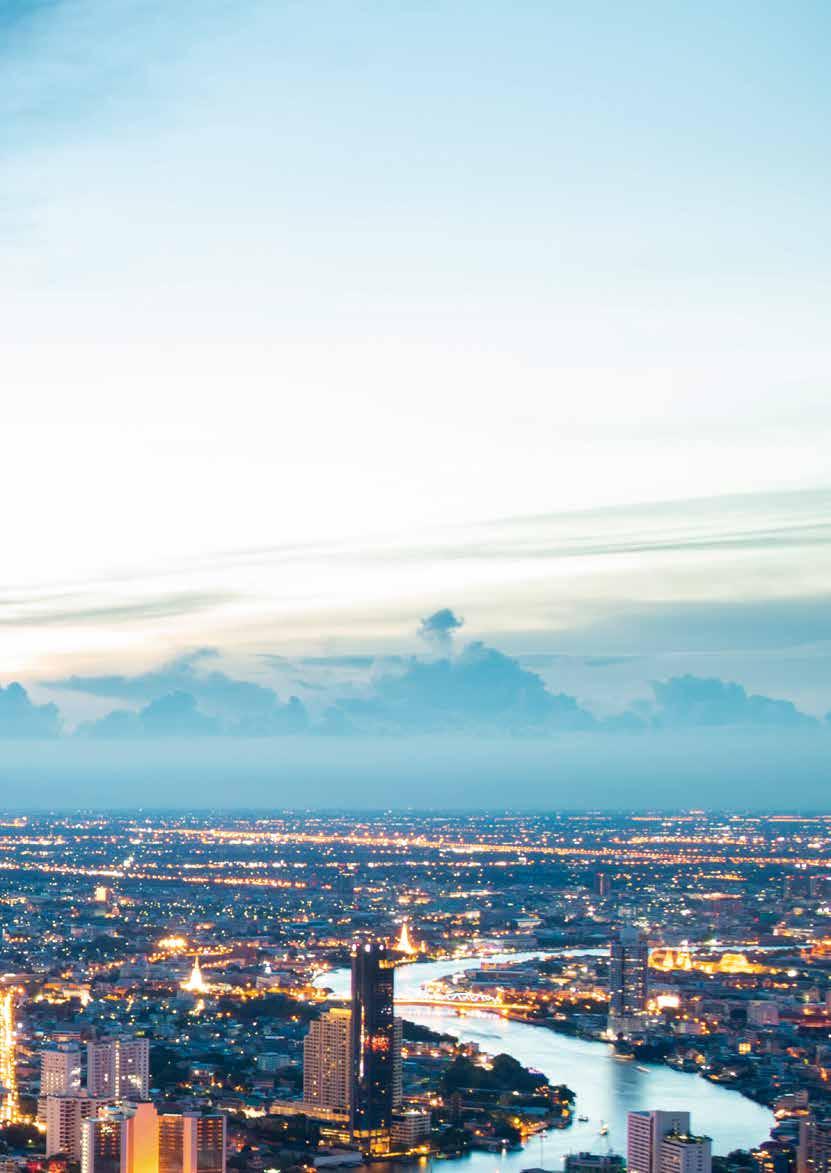
By Raymond Miklius, Vice President, Technology, GatesAir

As the broadcast industry continues to evolve, digital radio — particularly DAB+ — is gaining momentum as a reliable, cost-efficient, and scalable technology. GatesAir, a longtime supplier of high-quality DAB+ transmission systems, has been at the forefront of many successful DAB+ rollouts around the world.
According to WorldDAB. org, around 26 countries have officially adopted DAB+ as their preferred technology for delivering radio content, with another 29 in various stages of trial or regulatory review. GatesAir has participated in numerous deployments and has observed that countries completing an initial rollout often continue to expand their coverage through additional licenses.
A key factor in this progress has been the widespread availability of DAB+ receivers, especially in cars — once a hurdle, now no longer an impediment to growth.
Beyond adoption rates, DAB+ opens up valuable opportunities for broadcasters and listeners alike. While a single FM signal can carry only one analog program, a DAB+
signal can deliver up to 18 programs on the same frequency. This dramatically increases efficiency while significantly reducing both infrastructure and operational costs. For example, a transmission that would require a 10kW FM transmitter could be handled with just 1 to 2.5 kW using DAB+. Lower power consumption also translates into reduced energy bills, which is especially important for long-term network sustainability.
The advantages don’t stop there. DAB+ also enables what’s often
referred to as “visual radio” — the inclusion of metadata like album art, station branding, weather graphics, or traffic maps delivered alongside audio content. This enhances the overall user experience and offers new creative and commercial opportunities for broadcasters.
That said, transitioning to DAB+ does require coordination. Regulators must understand spectrum planning and ensure availability of VHF Band III. Licensing frameworks need to be thoughtfully developed, and broadcasters must work with network operators to determine power levels and ensure adequate audience coverage. Fortunately, the supplier ecosystem — including companies like GatesAir — is well-positioned to support this transition with robust infrastructure, expertise, and even peer
Licensing frameworks need to be thoughtfully developed, and broadcasters must work with network operators to determine power levels and ensure adequate audience coverage
consulting from established DAB+ users. Organizations like WorldDAB also provide valuable guidance and information throughout the process.
Despite the buzz around 5G, its impact on DAB+ adoption may be limited. Audio streaming over 5G relies on a one-to-one connection model, which is more costly at scale than DAB+’s efficient one-to-many approach. For free-to-air radio, DAB+ remains the most economical and scalable option.
Audio streaming over 5G relies on a one-to-one connection model, which is more costly at scale than DAB+’s efficient one-to-many approach
As for the future of FM, different countries are taking different approaches. Some turn it off entirely after a DAB+ rollout, while others maintain both systems side by side. In many places, FM still has a large installed base and listener loyalty. However, as digital receivers become increasingly common — particularly in vehicles — more broadcasters are finding compelling reasons to make the leap to digital.
GatesAir continues to support this transition globally, bringing not just equipment, but also expertise, partnership, and momentum to broadcasters ready to embrace the future of radio.

The FAST (Free Ad-Supported Television) market is accelerating rapidly, establishing itself as one of the main pillars of the new broadcast landscape. Within this context, the sports sector has found an exceptional ally, gaining a new platform to engage loyal fans and reach new audiences.
Sports Studio has seized this momentum to double down on its commitment to FreeLiveSports.tv through a strategic agreement with Amagi. The service offers a total of 120 FAST channels, making it one of the largest collections of sports content in this format worldwide.
In this article, we provide a comprehensive overview of the agreement through interviews with key decision-makers from both companies: James Patrick, Partner at Sports Studio, and Srinivasan KA, co-founder and Chief Revenue Officer at Amagi. We also explore Sports Studio’s strategy and the core pillars that support its platform. Monetization, storage, AI-driven developments, and cybersecurity are among the key topics discussed. Finally, we highlight Amagi’s market insights as a leading technology partner in this sector.
First of all, how do you assess this agreement? What advantages does the partnership with Amagi bring to Sports Studio?
James Patrick (Sports Studio): This partnership is a significant step forward for both companies. It eliminates much of the friction traditionally associated with distributing sports content, enabling Amagi's sports channels to be delivered seamlessly to a platform that caters directly to a highly engaged, passionate audience of sports fans. It's a win-win that accelerates reach and impact
Srinivasan KA (Amagi): This partnership is a validation of our role as a technology partner for content owners in the FAST
ecosystem. Sports Studio Inc. had a clear goal: to create a premier sports platform where viewers could easily find and enjoy their favourite sports channels — all in one place. By selecting Amagi, they aim to streamline the creation, distribution, and monetization of sports channels at scale. Our collaboration supports their mission by providing a smooth, cloud-based workflow and by powering over 40 premium sports channels on FreeLiveSports.tv. This partnership also gives sports rights holders a platform that allows them to reach wider audiences and open up new revenue streams through our monetization tools and content marketplace.
What technological implementations have been carried out?
James Patrick (Sports Studio): We've integrated a streamlined system that allows us to receive HLS streams directly from Amagi. Additionally, we’re utilizing Amagi’s Server-Side Ad Insertion (SSAI) capabilities, enabling us to efficiently monetize the content while maintaining a seamless viewing experience.
Srinivasan KA (Amagi): As part of this engagement, Amagi has provided Sports Studio with cloud streaming and monetization solutions. These implementations include channel creation, dynamic ad insertion, cloud playout, and distribution across FAST platforms. By leveraging our suite of products, Sports Studio can offer full-service channel creation and operations — especially for rights holders that may not have in-house
technical capabilities. This allows them to focus on their content while we handle the backend infrastructure, content delivery, and monetization.
In general, how do you evaluate the evolution of FAST models in today’s media landscape?
James Patrick (Sports Studio): FAST has evolved far beyond initial expectations. The much-discussed shift away from traditional cable— cord-cutting—has already arrived, and audiences are increasingly seeking high-quality, free content alternatives. As a result, FAST platforms are now home to not just large and diverse audiences, but also premium content, including live sports. The model is maturing rapidly and establishing itself as a major pillar in the media ecosystem.
Srinivasan KA (Amagi): We believe FAST has become an essential pillar of the global content distribution ecosystem. It intends to address a major audience need: free, highquality content with easy access. Sports are a compelling vertical for FAST, given its real-time, engaging nature. The growth of platforms like FreeLiveSports.tv showcases how this model can scale while still offering compelling viewer experiences and monetization potential for content owners.

Sports Studio: “FAST has evolved far beyond initial expectations. The much-discussed shift away from traditional cable—cord-cutting— has already arrived, and audiences are increasingly seeking high-quality, free content alternatives”
Amagi: “FAST has become an essential pillar of the global content distribution ecosystem. It intends to address a major audience need: free, high-quality content with easy access”
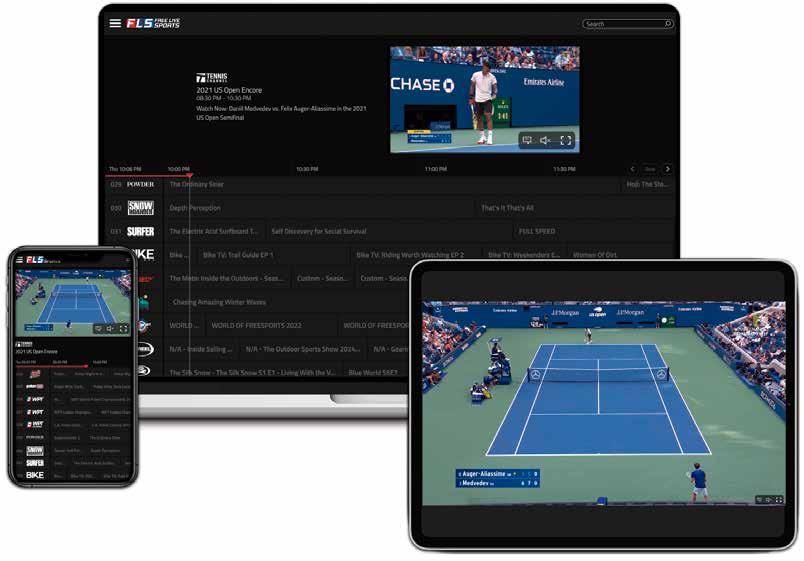
To introduce our readers, could you tell us about the recent evolution of the platform? What is its position in the current landscape of sportsfocused FAST services?
FreeLiveSports.TV has grown rapidly in response to increasing consumer demand for accessible, high-quality sports content.
“On the monetization side, we're experimenting with interactive ad formats, overlays, and dynamic visual elements like L-squeezes”
Today, we offer over 120 live sports channels, making us the most comprehensive destination for free sports streaming available via FAST. Our content spans an array of disciplines—from major league action to niche and emerging sports—making it easy for fans to discover new favorites while staying connected to the ones they already love. Our footprint spans CTV platforms, ensuring maximum reach and a seamless experience across devices. In terms of positioning, we are the largest curated collection of live FAST sports channels available within a unified EPG, which sets us apart as a true destination for sports enthusiasts.
What would you say differentiates your platform from others?
Our platform has a singular focus on sports. While many FAST platforms offer a
mix of genres, our strategy is centered around live and on-demand sports content. This dedicated approach allows us to provide both breadth and depth— meaning viewers get access to a wide spectrum of sports, and each sport is represented with thoughtful programming and tailored channels. We don’t just aggregate sports content; we curate it in a way that maximizes discoverability and relevance for our viewers. This deep specialization enables a better user experience and stronger engagement metrics.
are
main technical challenges you are currently facing?
One of our most pressing challenges is keeping up with the rapid pace of growth. We're onboarding new channels at a record pace, and maintaining the same level of quality, speed, and stability in that process requires constant optimization. On the monetization side, we're experimenting with interactive ad formats,
overlays, and dynamic visual elements like L-squeezes. These innovations require strong backend integrations, low-latency ad delivery, and tight coordination across multiple vendors.
“Today, we offer over 120 live sports channels, making us the most comprehensive destination for free sports streaming available via FAST”
How do you handle content storage from a technological standpoint?
We’ve partnered with Bunny CDN for our content delivery and storage infrastructure. It’s a high-performance, globally distributed system that helps us ensure fast load times, low latency, and high availability, regardless of the user's location or device. Bunny gives us the flexibility to scale quickly while maintaining cost-efficiency and reliability, which is crucial as we continue to expand our content library and user base.
“We’ve partnered with Bunny CDN for our content delivery and storage infrastructure”
Have you implemented AI in your processes?
Absolutely. AI plays a critical role in enhancing user experience on our platform. We use AI-powered algorithms to curate and recommend VOD content based on individual viewing behavior, ensuring each user gets a personalized and relevant content lineup. This recommendation engine is powered by Argoid, which was recently acquired by Amagi. It helps us to retain users and also surface long-tail content that might otherwise be overlooked.
What can you tell us about cybersecurity?
How do you address this issue?
Cybersecurity is paramount, especially in a digital ecosystem that handles user data and serves highvalue video content. While we rely on trusted thirdparty vendors to manage much of the security infrastructure, we ensure
that all partners adhere to industry best practices— ranging from secure video encryption and DRM to compliance with global data privacy standards. This layered approach ensures both platform integrity and user trust.
Have you implemented any other technological innovations that we haven’t mentioned?
At this point, the most noteworthy innovations have already been mentioned, including our advanced adtech experiments and AI-driven personalization. However, we’re constantly exploring new tools and technologies that align with our mission to deliver the best sports viewing experience possible.
What can you share about your future plans?
We’re actively working on an AI-powered, fully personalized EPG (Electronic Program Guide). The goal is to tailor the entire content discovery experience for each user—surfacing live channels and VOD content based on their unique sports interests. Imagine a guide that prioritizes your favorite teams, leagues, or even niche sports at the top, every time you log in. We believe this level of personalization will significantly boost user engagement and further differentiate us in an increasingly competitive landscape.
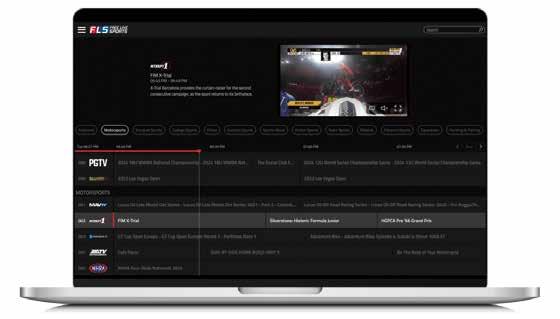

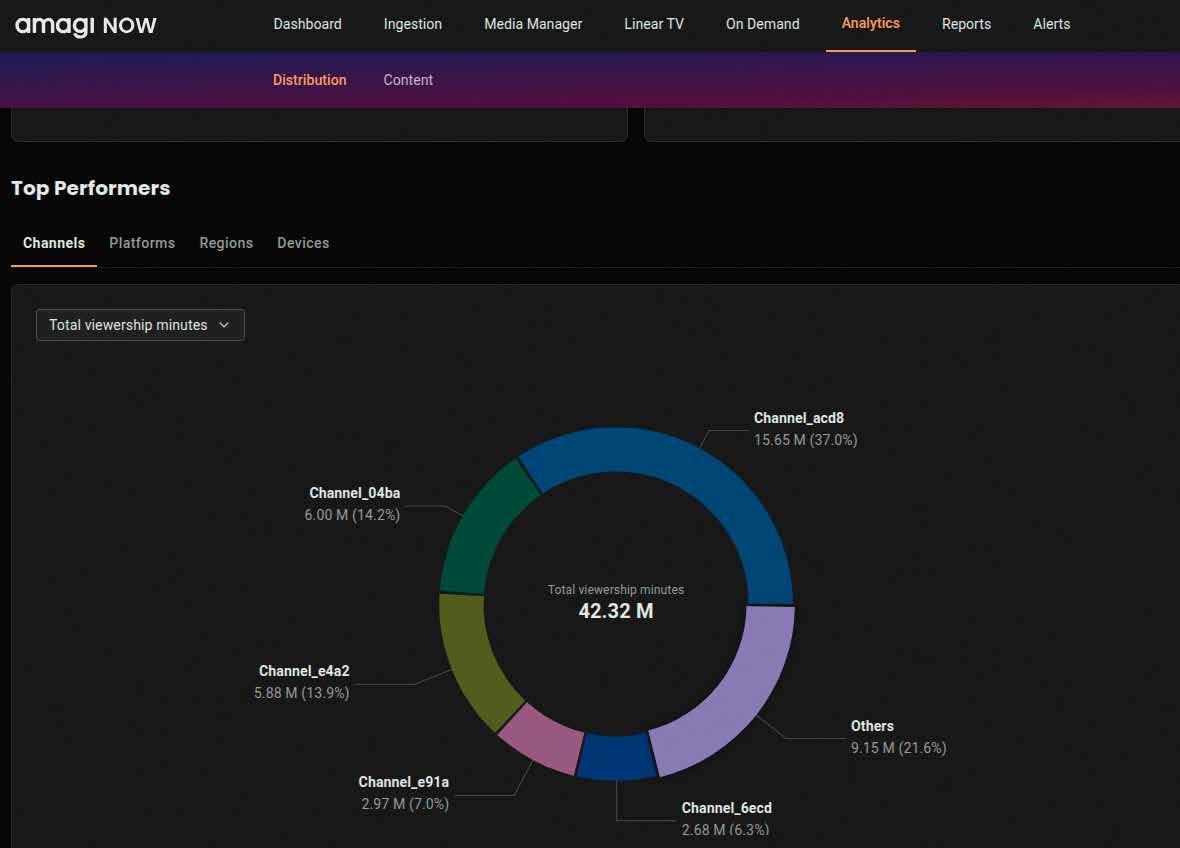
As an introduction, what is the company’s current situation, and how has it evolved recently?
Officer
Amagi is a media technology company. We currently support over 800 content brands and deliver 5,000+ channels across 150+ countries. Our cloud-native approach has resonated with both
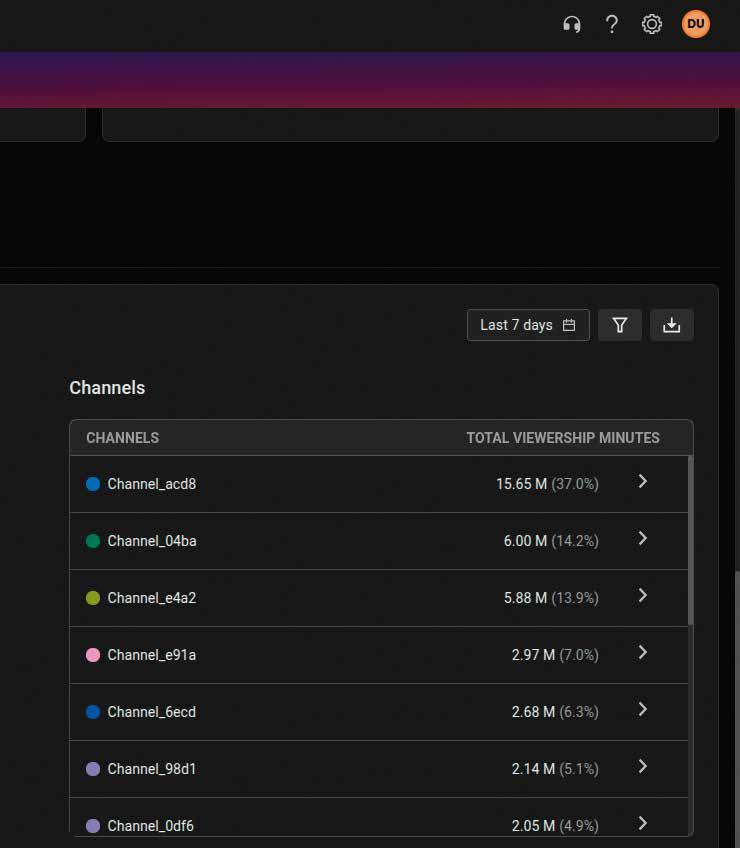
traditional broadcasters and digital-first media companies.
We’ve expanded our global presence — with operations in New York, Los Angeles, London, Paris, Singapore, Seoul, and beyond. Our innovation centers in Bengaluru, Zagreb, and Łódź continue to drive product advancements.
What would you say sets you apart from other competitors?
What sets Amagi apart is our comprehensive, cloud-based platform. We can enable content owners to launch, distribute, and monetize live and linear channels across FAST and video services platforms globally, reducing the need for physical infrastructure.
In addition, our content marketplace aims to help our partners discover new distribution opportunities, while our deep understanding of
broadcast and streaming ecosystems ensures quality and reliability. We don’t just offer tools — we provide strategic, scalable solutions.
“The rise of hybrid linear/VOD offerings is a major trend. Platforms are moving toward comprehensive experiences where audiences can access live, linear, and on-demand sports content with ease”
What are the key technological trends you are observing in the OTT market, particularly in FAST services?
There’s a continued push toward automation, personalization, and data-driven workflows. We see growing demand for better monetization through targeted advertising, increased interest in localization and multi-language support, and stronger emphasis on analytics and performance visibility.
The rise of hybrid linear/ VOD offerings — like what FreeLiveSports.tv is building — is another major trend.
Platforms are moving toward comprehensive experiences where audiences can access live, linear, and on-demand sports content with ease.
What are the main challenges or areas for improvement that you have identified among your clients?
Many content owners face challenges around operational complexity, scale, and monetization. For rights holders, especially in sports, it may be difficult to launch a channel, get it distributed, and monetize it effectively — particularly without inhouse technical teams.
“We’re looking to explore advanced use cases like personalized content feeds and predictive channel scheduling — areas where AI will drive significant future impact”
That’s exactly the gap this partnership with Sports Studio aims to help address. With Amagi’s technology, even smaller or niche content owners
can reach global audiences without significant upfront investment.
One of the key aspects of OTT and FAST platforms is monetization through advertising. How is this being addressed from a technical perspective?
Amagi’s Dynamic Ad Insertion (DAI) capabilities — via Amagi THUNDERSTORM — allow for real-time, server-side ad insertion with. This enables content owners to maximize revenue while maintaining an uninterrupted, broadcast-quality viewer experience. We also work closely with demand partners, offer, and provide flexible monetization models — whether programmatic or direct. Our goal is to make monetization smoother and scalable for every channel owner.
What role is artificial intelligence playing in these processes?
Have you incorporated it into your solutions?
AI plays a larger role across our platform — from metadata enrichment
and automatic content segmentation to ad optimization and viewer analytics. By integrating AI into our workflows, we can help content owners improve efficiency, discoverability, and monetization outcomes. We’re also looking to explore advanced use cases like personalized content feeds and predictive channel scheduling — areas where AI will drive significant future impact.
“Many content owners face challenges around operational complexity, scale, and monetization”
How do you assess the evolution of cloud technology applied to these services?
Cloud is the foundation for everything we do. It enables speed, scale, agility, and cost-efficiency, which are essential in today’s media landscape. Cloud technology has made it possible to build global platforms like FreeLiveSports.tv, allowing teams to launch channels efficiently. The cloud has
also enabled greater automation, remote operations, and innovation.
Finally, what are your plans for the future?
We will look to continue investing in AI-driven workflows, global content partnerships, and streamlined monetization solutions. We're committed to helping content owners, especially in categories like sports, news, and entertainment, reach wider audiences and discover greater value from their content. At the same time, we aim to enhance our self-serve capabilities and deepen integrations with leading ad tech platforms to provide even more flexibility and control for our customers.
“We will look to continue investing in AI-driven workflows, global content partnerships, and streamlined monetization solutions”
Is there anything else you’d like to add?
This partnership with Sports Studio reflects the power of combining
content with more advanced technology. Together, we’re aiming to make it easier for sports fans to discover, enjoy, and engage with the
content they love—all for free. We look forward to continuing to innovate and support the entire FAST ecosystem as it evolves.
